Why Does my Wandering Jew Plant Have Brown Spots?
Wandering Jew plants are popular houseplants known for their beautiful foliage and easy care. These plants are native to South America and are characterized by their long, trailing stems and delicate leaves. However, despite their easy care requirements, Wandering Jew plants can develop brown spots on their leaves, which can be a cause for concern for many plant owners.
In this article, we will explore the reasons why your Wandering Jew plant may have brown spots, as well as provide tips on how to prevent and treat this issue.

Causes of Brown Spots on Wandering Jew Plants
Overwatering.
One of the most common causes of brown spots on Wandering Jew plants is overwatering. These plants prefer soil that is lightly moist but not waterlogged. When the soil is too wet, it can cause root rot, which can lead to brown spots on the leaves. To prevent overwatering, make sure you allow the soil to dry out slightly between waterings and avoid leaving your plant in standing water.
Underwatering
On the other hand, underwatering can also cause brown spots on Wandering Jew plants. When the plant does not receive enough water, its leaves can become dry and crispy, leading to brown spots. To prevent underwatering, make sure you water your plant regularly and do not let the soil dry out completely.
Lack of Humidity
Wandering Jew plants prefer high humidity levels, and low humidity can cause their leaves to become dry and develop brown spots. To increase humidity around your plant, you can place a humidifier nearby or mist the leaves regularly.
Pests such as spider mites and mealybugs can also cause brown spots on Wandering Jew plants. These pests feed on the plant’s sap, which can lead to brown patches on the leaves. To get rid of pests on your plant, you can use insecticidal soap or neem oil.
Fungal Infections
Fungal infections can also cause brown spots on Wandering Jew plants. These infections can occur when the plant is kept in a humid environment or when water is allowed to sit on the leaves for too long. To prevent fungal infections, make sure you keep your plant in a well-ventilated area and avoid getting water on the leaves.
How to Treat Brown Spots on Wandering Jew Plants
If your Wandering Jew plant has developed brown spots, there are a few things you can do to treat it:
Identify the cause: The first step in treating brown spots on your Wandering Jew plant is to identify the cause. Once you know what is causing the issue, you can take steps to address it.
Trim affected leaves: If the brown spots are limited to just a few leaves, you can trim them off using a pair of clean, sharp scissors. This will prevent the infection from spreading to other parts of the plant.
Adjust watering: Depending on the cause of the brown spots, you may need to adjust your watering schedule. If you have been overwatering, allow the soil to dry out before watering again. If you have been underwatering, make sure you water your plant more frequently.
Increase humidity: If low humidity is causing brown spots on your Wandering Jew plant, you can increase humidity by misting the leaves or placing a humidifier nearby.
Apply fungicide: If your plant has developed a fungal infection, you can apply a fungicide to prevent it from spreading. Be sure to follow the instructions on the label carefully.
Q: Can I save my Wandering Jew plant if it has brown spots?
A: Yes, you can save your Wandering Jew plant if it has brown spots. Identify the cause of the brown spots and take steps to address it, such as adjusting your watering schedule or applying fungicide.
Q: Can brown spots on Wandering Jew plants be harmful to humans or pets?
A: No, brown spots on Wandering Jew plants are not harmful to humans or pets. However, if your plant has a fungal infection, it may be best to keep it away from other plants to prevent the infection from spreading.
Q: Can I prevent brown spots from developing on my Wandering Jew plant?
A: Yes, you can prevent brown spots from developing on your Wandering Jew plant by providing it with the proper care. This includes watering it correctly, keeping it in a well-ventilated area, and providing it with high humidity levels.
Related Posts
Here are some more posts from the " Wandering Jew Plant " category that you may enjoy.
- Guide to Growing Wandering Jew Plant in a Pot
- How to Get Rid of Worms in Wandering Jew Plant
- How to Prevent Wandering Jew Plant from Rotting
- Why Is My Wandering Jew Plant Falling Over
- How Much Water Does Wandering Jew Plant Watering
- How to Get Rid of Snails on Wandering Jew Plant
- Wandering Jew Plant Stages of Growth
- How to Get Rid of Fruit Flies on Wandering Jew Plant
- How to Get Rid of Mealybugs on Wandering Jew Plant
- How to Get Rid of Aphids on Wandering Jew Plant
- Growing Houseplants
- Indoor Garden Ideas
- Cactus & Succulents
- Houseplants Care
- Flowers & Blooms
- Gardening Guide
- Plant Care and Tips
- Beans/Fruit Vegetables
- Companion Planting
- Culinary Herbs
- Flowering Herbs
- Garden Design
- Gardening Ideas
- Growing food
- Growing Trees and Shrubs
- Leafy Vegetables
- Medicinal Herbs
- Patio Gardening
- Root Vegetables
- Shade Plants
- Temperate Fruits
- Tropical Fruits
- Balcony Gardening
- Container Fruits
- Container Gardening Ideas
- Container Herbs
- Container Vegetables
- Rooftop/Terrace Gardening
- Urban Gardening
- Vertical Gardening
- More Than Gardening
- Best and Top of Gardening

- Container Gardening
- Indoor Gardening
Wandering Jew Leaves Fading? 5 Tips to Make it Colorful Again

2-Minute Read
Here are 5 useful tricks to retain the shine and color of your wandering dude so you can showcase your plant in all its glory.

Houseplants like the Tradescantia Zebrina are known for their colorful foliage, but sometimes, those wonderful colors fade. Why? What is the reason? How can you get that color purple back and metallic stripes glowing again? Everything is answered in this article.
Reasons for Wandering Jew Leaves Losing Color and Fading
There are four main reasons why your wandering Jew plant is losing color and fading. The biggest reason is light! These plants love bright, indirect sunlight, warmth, and shade; anything less or more can affect their appearance.
1. If it’s tucked away in a corner or doesn’t get much natural light, the leaves will appear dull. Leggy growth, with long spaces between leaves, is another sign of light issues.
2. On the contrary, exposure to direct sun can also be bad, bleaching those pretty colors.
3. Another reason is when your plant is mature and has a lot of old growth, then the leaves could also start losing their color.
4. Apart from that, it can be due to dust accumulation as well.
6. Lastly, there can be a watering issue: Underwatered Wandering Dudes will get droopy, and the leaves will lose their shine. But be careful not to overwater either, as that can lead to pale leaves and root rot.
As you can see, there are many explanations for why this happens, and if there are explanations, there are solutions as well to bring back the shine and color of your favorite houseplant.
The No. 1 Trick to Retain Shine and Color of Wandering Jew Plant
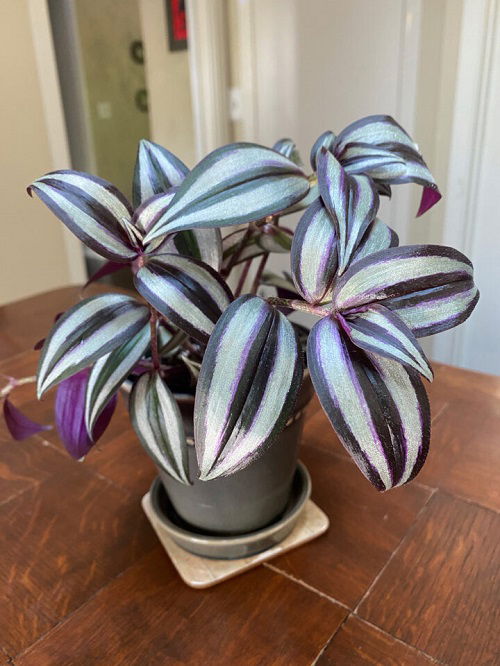
The key to maintaining your Wandering Dude plant’s color and shine is good, balanced lighting . Too much direct sun can scorch the leaves, while low light will cause them to lose their vibrancy.
So find a happy place for your plant where it can get 8-10 hours of indirect sunlight and watch those colors pop! It would be great if it receives 2-3 hours of mild sun, either in the morning or evening.
Locate them near an eastern direction . A south or west-facing one would also work if you save the plant from direct exposure. This guide will help you with all of it.
Tricks to Retain Shine and Color of Wandering Jew Plant
2. rotate weekly.
These plants love to sprawl or cascade freely with their beautiful striped leaves. But just like us humans, they need a little help to grow nice and even, especially when growing in a pot.
Without rotating, the side facing the light will grow better, while the other side might get leggy (stretchy and thin) because it isn’t getting enough light.
By turning your plant every week, all sides get a chance to bask in the sunshine. This encourages the plant to grow full and bushy from all sides with even coloration.
3. Prune it for Bushier and Colorful Growth
This is important to give your Wandering Jew a colorful and bushier look! Old growth looks less saturated and vibrant, and removing it gives way to fresh, new, colorful growth.
When the plant is actively growing, keep doing this periodically–Grab your sharp scissors or pruning shears and look for old growth, overgrown or faded stems, and leaves that are yellow, brown, or just don’t look happy anymore. You can snip those right off.
For leggy and mature growth, find the long stretches on the stems with few leaves. Just above a healthy leaf node (the little bump where a leaf meets the stem), cut off the stem clean. Later, these pruned cuttings can be propagated in water or soil to multiply your plant.
If it’s still leggy—you can do many more things to fix it .
4. Fertilize with a Liquid Fertilizer
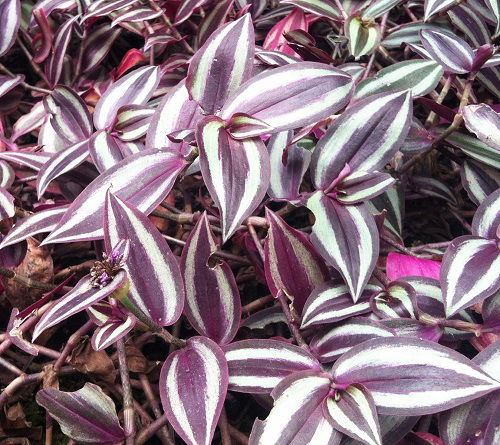
To keep those colors popping and the leaves shining, you should not miss giving them a boost with a balanced houseplant fertilizer.
Look for any water-soluble fertilizer with equal NPK, like 10-10-10 with trace elements. Wandering Jews aren’t picky about any special brand, so you can use anyone that’s available.
Apply a 1/4-strength fertilizer solution regularly—it is one-quarter of the full strength recommended by the manufacturer on the packet. Feed this to your Wandering dude every 15-20 days in the active growth season (spring and summer). It’s more than enough. Reduce fertilization in fall and winter when the plant goes dormant.
5. Cleaning
Whether your plant is swooping the floor freely or perched atop an elevated location like a hanging basket, it accumulates dust over time.
So, it would be best to wipe off the leaves with a soft cloth. Or, you can give it a quick shower in the sink to clean the foliage every couple of months. When doing this, follow these basic tips to clean it.
The Mayonnaise Trick
You might find it surprising, but there’s a Mayonnaise trick you can use to clean your Tradescantia Zebrina and restore the shine on the leaves.
Mayonnaise does a decent job of wiping away dust and leaving a temporary sheen due to its oils. Now, it won’t harm your plants in small amounts, but it’s more of a quick fix.
You cannot use it always because it’s not good for the plant in the long run—it can clog stomata on the leaves, hindering the plant’s ability to function.
So there you have it! With proper sunlight, rotation, fertilizer, and occasional cleaning and yes! Pruning, which is very crucial to trim old growth, your Wandering Jew will thrive and showcase its pretty colors. If you, too, have a home remedy to retain the color and shine of this houseplant, do let us know in the comments!
Recent Posts
12 reasons why everyone should grow mint in the garden, blue lotus flower meaning and care, 21 diy crochet gardening apron patterns, 10 cool season flowers that love chilly weather, 4 things to do with christmas cactus in august for more flowers, 15 most common weeds found in the usa, 7 ways to prune all your houseplants, how to make any coleus bushier and bigger, join our 3 million followers:, related articles, 15 best fruit trees that grow in ohio, leave a reply cancel reply.
Save my name, email, and website in this browser for the next time I comment.

Get the Best of BalconyGardenWeb Directly in your inbox.
POPULAR CATEGORY
- Best and Top of Gardening 1677
- Flowers & Blooms 702
- Growing Houseplants 604
- Gardening Guide 441
- Gardening Ideas 400
© 2023 Balcony Garden Web | All rights reserved
- Privacy Policy
- Terms of Service
- Feedback Page

Wandering Jew Plant – Ultimate Care Guide
By: Author Daniel
Posted on Last updated: September 18, 2023

Sharing is caring!
- Facebook 60
You are reading this guide to learn more about the Wandering Jew Plant and its care . I have had this plant at home for many years and write about all the growing aspects in this guide.
Wandering Jew Plant Care Takeaways
What is the wandering jew plant.
The Wandering Jew, or Tradescantia zebrina, by its scientific name (old name = Zebrina pendula) is native to Mexico. It is not to be confused with Tradescantia albiflora, which also goes by Wandering Jew and has very similar care needs.
Tradescantia zebrina has attractive foliage, sporting exciting zebra-patterned leaves. It also flowers. But when kept as a houseplant, this rarely ever happens. It is a fast-growing and excellent groundcover, according to the University of Florida .

W andering Jew Plant Care
To keep your Wandering Jew plant thriving, ensure it receives bright, indirect sunlight. Keep it in average room temperatures of 60-75°F (16-24°C). Fertilize once a month during spring and summer. In winter, relocate the plant to a cooler area with temperatures of 54-59°F (12-15°C).
Table of Contents
Tradescantia zebrina Growing guide
Tradescantia zebrina care is pretty straightforward, but it certainly can’t hurt to glance at the most important things to consider when caring about this herbaceous perennial plant.
So, without further ado, let’s see how you can make your Wandering Jew, aka the Inch plant, as happy as possible.
Any good potting soil will do for your Wandering Jew. For instance, this could be Miracle Gro potting soil readily available online in stores like Amazon.
But these plants not only feel very comfortable in soil but can also be kept in hydroponics .
Sunlight is a vital aspect when it comes to the well-being of most houseplants. Some houseplants do well with moderate sunlight, while others only thrive (or flower) when a certain level of sunlight is guaranteed.
The Wandering Jew does best in bright, indirect sunlight .
If you are unsure what that means, please look at our Light Levels article.
The Wandering Jew, a tropical native, thrives best when the root ball is always well moisturized. Still, waterlogging should be avoided whenever possible, as this could lead to root rot .

This tropical plant does not enjoy limy water. Use soft water whenever possible. Rainwater and distilled water are very good choices.
Temperature
People who own an Inch plant and keep it outside run the risk of exposing it to cold temperatures. This is where indoor plant owners have the upper hand.
Wandering Jews can thrive with average room temperatures of 60 to 75°F (16 to 24°C) if it doesn’t drop for long periods. Anything below 12°C for an extended period could be fatal for your Wandering Jew.
Wandering Jews prefer a humidity of around 70%
The perennial, herbaceous Wandering Jew plant is native to Mexico, Central America, and Colombia, so it should not surprise you that it likes a good deal of humidity.
To ensure high humidity levels, regularly misting your plant is a very good idea. A hand mister filled with water does the trick.
As for the location, you may want to keep your Wandering Jew in the bathroom , as this is usually the place in the house with the highest humidity.
Feed your plant once a month during spring and summer. In winter, fertilizing is not necessary.
Also, fertilization of the Wandering Jew is only necessary from the second year of cultivation or after repotting.
Propagation
It is best propagated through stem tip cuttings. Propagating the Wandering Jew is an easy task.
Wandering Jews don’t get very tall. They might reach a height of about 14 inches (36 cm) when kept indoors. They spread to about 10 inches (25 cm).
(Re)potting
The thing with the Wandering Jew is that it grows fast , hence its nickname “Inch plant.” Because of its fast-growing pace, the plant usually gets very leggy, and leaves are often lost near the base of the plant.
Repotting is pivotal for keeping the root system healthy regardless of the actual plant species. However, how often a houseplant needs to be repotted depends on various factors.
Some houseplants grow incredibly fast, so they need to be repotted often. Others, on the other hand, grow very slowly, so repotting is not a top priority.
That said, repotting your Wandering Jew occasionally is a good idea.
How long does a Wandering Jew live?
As far as the longevity of Wandering Jews goes, they often don’t get older than 2 to 3 years.

Wandering Jew Watering
Water about once every 5-7 days in spring and summer. Keep the soil slightly humid. Do not let the Wandering Jew dry out between waterings. Use your index finger to check if the soil is dry down 1-2 inches of soil (2.5 – 5 cm).
Reduce watering to every 10-14 days in autumn and winter.
Wandering Jew Propagation
The Wandering Jew roots very easily . The plant can easily be propagated through stem tip cuttings.
When propagating your Wandering Jew, make sure that your plant is in a healthy condition.
Please follow our step-to-step guide to propagate your Wandering Jew through stem tip cuttings.
Propagation through stem tip cuttings
- Identify the plant that you want to replicate. It should have healthy growth and plenty of stems.
- Make clean cuts on sections that are three to six inches in length .
- Use a sharp knife and carefully cut the leaves on the stem’s bottom half.
- If you want, you can dip the exposed end of the stem in a rooting hormone . This will speed up the rooting process. However , it is unnecessary .
- Place your stem tip cuttings into a pot with fresh soil after thoroughly watering the potting mixture.
- Use a clear plastic bag to hold in moisture, taking it off to water weekly .
- Keep your eyes on the plant for new growth . You should start to see roots in about two to three weeks . Once this happens, transfer the plant babies to a larger pot.
Note: Instead of rooting your stem tip cuttings directly in soil, you could also root them in water .
Wandering Jew Pest Control
Wandering Jews are prone to aphids and spider mites attacks. So, you will need to look out for these two little pests.
Some of these are known to cause defoliation, while others can kill the plant altogether. Depending on the severity of the infestation, you may need to use chemicals or insecticides .
Aphids on my Inch Plant
The Wandering Jew is not particularly susceptible to plant diseases or pests. Yet, you might have to deal with an aphid attack at some point. These parasites pierce the leaves of their host plant and suck their sap.
Like scale insects, they excrete sticky honeydew, by which you can immediately recognize the infestation.
Aphids can multiply explosively, especially in warm , dry environments.
As a preventive measure, ensure regular watering and occasional misting of your Wandering Jew.
The best way to combat aphids is to control them mechanically by rinsing them off the plant with water . Isolate the plant from the rest of the collection.
Pest Prevention
To prevent the Wandering Jew from pest infestations, plucking dried leaves regularly makes sense as well as using neem oil. The dried leaves lying on the substrate must be removed. Otherwise, there is a risk of rotting or infestation by parasites and fungi .
Wandering Jew Problems
Brown leaf tips.
Brown leaf tips is a very common problem with a wide variety of houseplant. Depending on the species, the causes for this problem can be very different, though.
So what causes leaves to turn brown with Wandering Jews?
My Wandering Jew has only green leaves (not enough variegation)
If you do own a variegated Wandering Jew but only see a great amount of non-variegated leaves, chances are that your plant does not get enough sunlight .
To solve the problem, allow your Wandering Jew some bright, indirect sunlight by placing it in a sunnier location.
Fading leaves
If your inch plant’s foliage is suddenly losing color and sports fading leaves, this is another sign that it does not get enough sunlight .
Dropping leaves
Dropping leaves is another very common problem many plant parents must deal with regularly . If your Wandering Jew drops leaves, this is usually due to too low or too high temperatures .
In summer , ensure your Wandering Jew is exposed to average room temperatures.
In winter , it should be kept in a cooler environment.
Is Wandering Jew care difficult?
Wandering Jews are considered low-maintenance plants and are perfectly suitable for beginners.
They do well at average room temperatures, don’t demand a very high level of humidity (which is sometimes difficult to achieve in a home environment), and it is very easy to propagate them through stem tip cuttings.
Which plant species are commonly referred to as “Wandering Jew”?
Tradescantia zebrina as well as Tradescantia albiflora.
What is the difference between Tradescantia zebrina and Zebrina pendula?
There is no difference between Tradescantia zebrina and Zebrina pendula. Zebrina pendula is just the old name for Tradescantia zebrina.
Does my Wandering Jew flower at all?
Wandering Jews are indeed flowering plants. However, when kept indoors, they very rarely flower.
How long can you keep a Wandering Jew?
If you don’t propagate your Wandering Jew, you can keep it for about three years. After that period, the quality of your Wandering Jew will most likely decrease. If you regularly propagate your leafy friend through stem tip cuttings, you can keep it indefinitely.
Any display tips for Wandering Jews?
Wandering Jews look great in hanging planters!
Is the Wandering Jew toxic to cats?
The Wandering Jew plant is toxic to cats. Therefore, you have to keep your cat away from this plant.
Is the Wandering Jew toxic to dogs?
Yes, the Wandering Jew plant is toxic to dogs. Therefore, you must ensure your dog does not come in contact with this plant.
What are the health benefits of Tradescantia zebrina, if any?
Not only is The Wandering Jew a beautiful houseplant famous for its striking foliage, but it also presents several health benefits for humans. It is especially known for its antioxidant and antibacterial activity, and it is widely used in Traditional Medicine in several countries. Tradescantia zebrina is also believed to be a valuable source for treating kidney diseases.
The Last Zebrina
The Wandering Jew is a great houseplant that looks stunning in hanging planters. Its care is easy apart from its humidity-loving nature.

Daniel has been a plant enthusiast for over 20 years. He owns hundreds of houseplants and prepares for the chili growing seasons yearly with great anticipation. His favorite plants are plant species in the Araceae family, such as Monstera, Philodendron, and Anthurium. He also loves gardening and is growing hot peppers, tomatoes, and many more vegetables.
Related Posts
(image credits, IG:oohyouplantsy) I have a hide-away in my home that I escape to for…
How much light does my plant need? This is a relevant question as too little…
I love plants that offer an eye-catching burst of color. They sure put a smile…
Most of the 45+ species in the Monstera genus are famous for their unusual leaves…
One of the rarest Anthuriums is the Anthurium Reflexinervium, a gorgeous plant naturally found only…
Hoya Lauterbachii belongs to Hoyas's family, which are known to be the largest plants on…
What are we looking for?
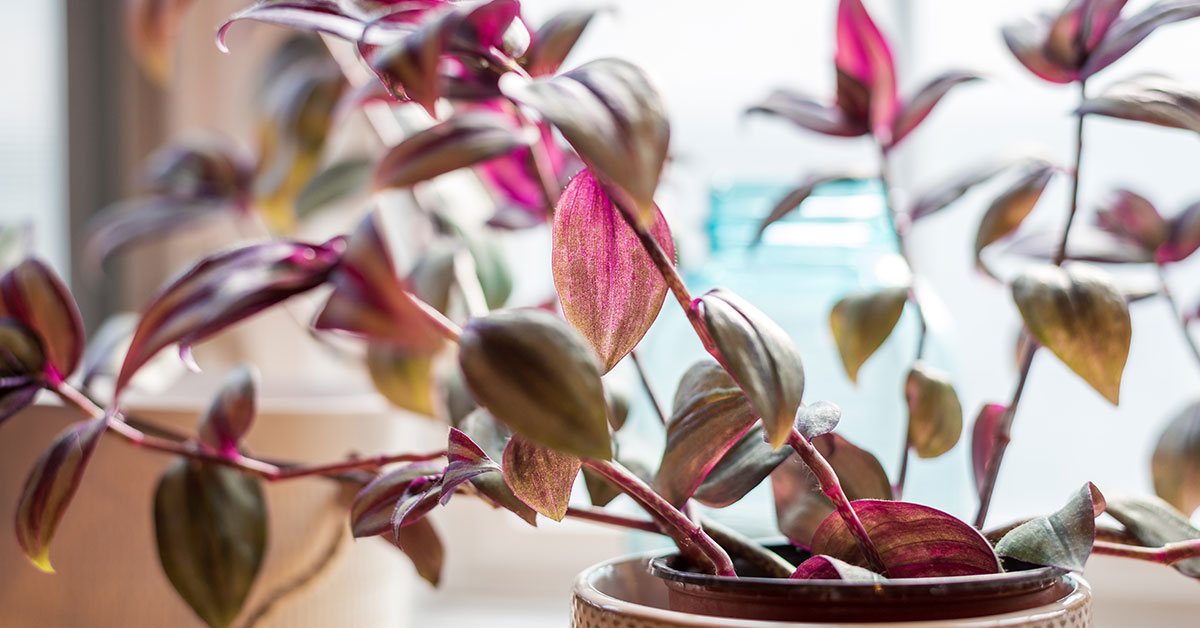
Why Your Wandering Jew Is Dying & How To Fix It

If you’ve noticed your Wandering Jew is dying or showing signs of distress, it’s important to identify the potential causes to effectively address the issue. This article aims to shed light on why your beloved Wandering Jew might be experiencing a decline and provide practical insights to help you revive it.
From improper watering practices and inadequate lighting to pest infestations and nutrient deficiencies, we’ll explore the various factors that could be contributing to your plant’s deteriorating health.
By understanding these potential causes and implementing the appropriate solutions, you’ll be equipped to save your Wandering Jew from further decline and restore it to a thriving state. So let’s dive into the possible reasons why your Wandering Jew is struggling and discover the steps you can take to bring it back to life.
Signs your Wandering Jew is dying
There are several signs that can indicate your Wandering Jew is dying or ill. Here are some common signs to look out for:
- Wilting: If the leaves of your Wandering Jew plant appear limp, droopy, or withered, it could be a sign of underwatering or overwatering. Check the soil moisture level and adjust your watering accordingly.
- Yellowing Leaves: Yellowing foliage may indicate various issues. It can be a result of overwatering, root rot, inadequate light, nutrient deficiencies, or pests. Assess the growing conditions and address the underlying cause.
- Browning Leaves: Browning and crispy leaves can indicate underwatering or exposure to direct sunlight. Ensure your plant is receiving adequate water and protect it from harsh sunlight.
- Leaf Loss: Excessive leaf drop or shedding is a distress signal. It can be triggered by changes in environmental conditions, insufficient light, overwatering, or pests. Identify the cause and take appropriate measures to rectify the issue.
- Stunted Growth: If your Wandering Jew plant’s growth has slowed down significantly or there is no new growth for an extended period, it could be a sign of unfavorable growing conditions, inadequate light, or nutrient deficiencies.
- Pest Infestation: Noticeable presence of pests such as spider mites, mealybugs, or aphids can weaken the plant and cause it to decline. Inspect the leaves and stems regularly, and take prompt action to eliminate pests if detected.
- Root Problems: If you notice a foul odor coming from the soil, root rot, or mushy and discolored roots when you inspect the plant’s root system, it indicates root problems. Overwatering, poor drainage, or fungal infections can contribute to root issues.
If you observe any of these signs, it’s important to assess the care and growing conditions of your plant, as it’s likely your Wandering Jew is dying or ill. Adjust watering, lighting, and environmental factors accordingly. In some cases, providing appropriate care can help revive a struggling plant. However, if the signs persist or the plant continues to deteriorate, it may be difficult to save and it might be necessary to consider replacing it.
Reasons why your Wandering Jew is dying and how to fix it
In this section, we will explore common reasons why your Wandering Jew plant (Tradescantia genus) may be experiencing distress or on the verge of dying. Understanding these issues can help you identify the root causes and take appropriate steps to revive your plant.
Wilting in a Wandering Jew plant (Tradescantia genus) can be caused by various factors, and identifying the underlying issue is crucial in determining the appropriate fix. It’s one of the more common signs your Wandering Jew is dying. Here are some common reasons why a Wandering Jew plant may be wilting and potential solutions:
- Underwatering: If the plant is not receiving enough water, it can lead to wilting. Check the moisture level of the soil by inserting your finger into the top inch of soil. If it feels dry, it’s time to water. Ensure thorough watering, allowing water to reach the root zone. Adjust your watering schedule to keep the soil slightly moist but not waterlogged.
- Overwatering: Conversely, overwatering can also cause wilting. Excessive moisture can lead to root rot, suffocating the roots and preventing them from taking up water properly. Allow the soil to dry out slightly before watering again. Ensure the pot has drainage holes to allow excess water to escape.
- Temperature Extremes: Wandering Jew plants prefer moderate temperatures between 65-80°F (18-27°C). Extreme temperatures, such as excessive heat or cold drafts, can stress the plant and cause wilting. Move the plant to a more suitable location with stable temperatures and protect it from drafts or direct exposure to heaters or air conditioning units.
- Light Intensity: Insufficient or excessive light can lead to wilting. Wandering Jew plants thrive in bright, indirect light. If the plant is placed in low-light conditions, it may not receive enough energy for healthy growth. Move the plant to a location with brighter, filtered light. However, be cautious of too much direct sunlight, which can scorch the leaves. Adjust the light exposure to find the optimal balance.
- Nutrient Deficiencies: Lack of essential nutrients can affect a plant’s overall health and cause wilting. Ensure your Wandering Jew plant receives adequate nutrition. Use a balanced, water-soluble fertilizer specifically formulated for houseplants and follow the instructions for application. Be mindful not to overfertilize, as this can lead to fertilizer burn or other issues.
- Pest Infestation: Certain pests, such as spider mites, mealybugs, or aphids, can weaken the plant and cause wilting. Inspect the plant regularly for signs of pests, including webbing, small insects, or sticky residue on leaves. Treat any infestations promptly using appropriate organic or chemical controls, following the recommended guidelines.
- Root Problems: Root issues, such as root rot or inadequate root development, can impact a plant’s ability to absorb water, resulting in wilting. Check the root system for signs of rot, such as foul odor or mushy roots. If root rot is present, take immediate action by addressing the overwatering issue, improving drainage, and trimming away affected roots.
It’s important to assess the specific cause of wilting in your Wandering Jew plant and take appropriate action accordingly. Adjust watering practices, improve lighting conditions, provide proper nutrition, address pest issues, and ensure a healthy root system. By addressing the underlying problem, you can help revive your wilting Wandering Jew plant and restore its vigor.
Yellowing and browning leaves
Yellowing or browning leaves in a Wandering Jew plant (Tradescantia genus) can indicate various issues. It’s another very common indication that your Wandering Jew is dying. Understanding the potential causes and taking appropriate action can help address the problem. Here are common reasons for yellowing or browning leaves and potential fixes:
- Watering Issues: Both overwatering and underwatering can lead to leaf discoloration. Overwatering can cause root rot, suffocating the roots and inhibiting their ability to absorb nutrients. Underwatering can result in dryness and nutrient deficiencies. Adjust your watering routine to maintain slightly moist soil, allowing the top inch to dry out before watering again.
- Light Intensity: Insufficient or excessive light can cause yellowing or browning leaves. If the plant receives inadequate light, it may struggle to produce energy and essential pigments. Move the plant to a location with bright, indirect light. However, excessive exposure to direct sunlight can scorch the leaves. Adjust the light exposure to find the right balance.
- Temperature Extremes: Extreme temperatures, such as cold drafts or heat stress, can cause leaf damage. Wandering Jew plants prefer moderate temperatures between 65-80°F (18-27°C). Protect the plant from cold drafts and ensure it is not placed near heaters or air conditioning units that generate excessive heat.
- Nutrient Deficiencies: Lack of essential nutrients can manifest as yellowing leaves. Ensure your Wandering Jew plant receives balanced nutrition. Use a water-soluble fertilizer formulated for houseplants, following the recommended application instructions. This can help address any nutrient deficiencies.
- Pest Infestation: Pests like spider mites, mealybugs, or aphids can cause yellowing or browning leaves. Inspect the plant regularly for signs of pests, such as tiny insects, webbing, or sticky residue on leaves. Treat any infestations promptly using appropriate organic or chemical controls.
- Environmental Stress: Environmental stressors, such as excessive heat, low humidity, or sudden changes in conditions, can impact leaf health. Ensure a stable environment with appropriate temperature, humidity, and airflow to minimize stress on the plant.
- Aging or Natural Leaf Shedding: It’s natural for older leaves to turn yellow or brown and eventually fall off. Monitor the plant to differentiate between natural leaf shedding and abnormal leaf discoloration. Prune away any excessively yellow or brown leaves to promote new growth.
When addressing leaf discoloration, it’s essential to identify the specific cause and tailor the solution accordingly. Adjust watering practices, improve lighting conditions, provide proper nutrition, address pest issues, and create a favorable environment. With consistent care and attention, your Wandering Jew plant can recover and display healthy, vibrant foliage once again.
Leaf loss in a Wandering Jew plant can occur due to various factors. Understanding the potential causes and taking appropriate action can help address the issue. Here are common reasons for leaf loss and potential fixes:
- Natural Shedding: It’s normal for Wandering Jew plants to shed older leaves as part of their natural growth cycle. As new growth emerges, older leaves may yellow, wither, and drop off. This process is generally not a cause for concern unless it is accompanied by other signs of distress.
- Watering Issues: Overwatering or underwatering can contribute to leaf loss. Overwatering can lead to root rot, causing the plant to shed leaves as it struggles to take up water and nutrients. Underwatering can result in dryness and leaf damage. Ensure proper watering by allowing the top inch of soil to dry out before watering again. Maintain a consistent watering schedule without overwatering.
- Lighting Conditions: Insufficient or excessive light can cause leaf loss. Inadequate light can lead to weak growth and leaf drop. Ensure your plant receives bright, indirect light for several hours a day. Excessive direct sunlight can scorch the leaves, leading to leaf loss. Adjust the lighting conditions to find the optimal balance.
- Temperature Extremes: Extreme temperatures, such as cold drafts or heat stress, can cause leaf loss. Wandering Jew plants prefer moderate temperatures between 65-80°F (18-27°C). Protect the plant from cold drafts and ensure it is not placed near heaters or air conditioning units that generate excessive heat.
- Nutrient Deficiencies: Inadequate nutrition can contribute to leaf loss. Ensure your Wandering Jew plant receives balanced nutrition by using a water-soluble fertilizer formulated for houseplants. Follow the recommended application instructions to provide essential nutrients.
- Pest Infestation: Pests such as spider mites, mealybugs, or aphids can weaken the plant and cause leaf loss. Inspect the plant regularly for signs of pests, such as tiny insects, webbing, or sticky residue on leaves. Treat any infestations promptly using appropriate organic or chemical controls.
- Environmental Stress: Environmental stressors, including low humidity, sudden changes in conditions, or air circulation issues, can lead to leaf loss. Maintain stable environmental conditions with adequate humidity and airflow. Avoid exposing the plant to drastic temperature fluctuations or drafts.
By identifying the specific cause of leaf loss in your Wandering Jew plant, you can take the necessary steps to address the issue. Adjust watering practices, improve lighting conditions, provide proper nutrition, address pest issues, and create a favorable environment. With consistent care and attention, you can help minimize leaf loss and promote healthy growth in your Wandering Jew plant.
Stunted growth
Stunted growth in a Wandering Jew plant (Tradescantia genus) can be attributed to various factors. Understanding these causes and taking appropriate action can help address the issue. Here are common reasons for stunted growth and potential fixes:
- Inadequate Lighting: Insufficient light can result in stunted growth. Wandering Jew plants require bright, indirect light for several hours a day to thrive. If the plant is placed in a low-light area, consider moving it to a spot with brighter, filtered sunlight. Supplemental artificial lighting can also be used to provide the necessary light intensity.
- Temperature Extremes: Extreme temperatures, such as cold drafts or heat stress, can negatively impact growth. Wandering Jew plants prefer moderate temperatures between 65-80°F (18-27°C). Protect the plant from cold drafts and ensure it is not exposed to direct airflow from heaters or air conditioning units that can cause temperature fluctuations. Maintain stable and comfortable temperature conditions for optimal growth.
- Nutrient Deficiencies: Insufficient nutrients can lead to stunted growth. Ensure your Wandering Jew plant is receiving proper nutrition by using a balanced, water-soluble fertilizer formulated for houseplants. Follow the recommended application instructions to provide essential nutrients. Additionally, consider repotting the plant if it has been in the same soil for an extended period, as fresh soil can provide additional nutrients.
- Root Bound: When the plant’s roots become overcrowded in a small pot, it can restrict growth. Check the roots by gently removing the plant from its pot. If the roots are densely circling around the root ball, it may be time to repot the plant into a slightly larger container with fresh soil. This allows the roots to spread and encourages new growth.
- Watering Issues: Inconsistent or improper watering practices can hinder growth. Overwatering can lead to root rot, while underwatering can cause dehydration and stunted growth. Maintain a regular watering schedule, allowing the top inch of soil to dry out before watering again. Ensure proper drainage and avoid waterlogging the soil.
- Pests or Diseases: Infestations by pests or diseases can weaken the plant, resulting in stunted growth. Inspect the plant regularly for signs of pests, such as spider mites, mealybugs, or aphids. Treat any infestations promptly using appropriate organic or chemical controls.
- Environmental Factors: Environmental conditions, such as low humidity or poor air circulation, can affect growth. Provide adequate humidity by misting the plant’s leaves or using a humidifier nearby. Ensure proper air circulation to prevent stagnant conditions that can hinder growth.
By addressing these potential causes, you can promote healthier growth in your Wandering Jew plant. Evaluate the lighting, temperature, watering, nutrient levels, and overall plant health. Make adjustments as necessary to create optimal conditions for the plant’s growth. With time and proper care, you can help your Wandering Jew plant overcome stunted growth and thrive.
Wandering Jew plants (Tradescantia genus) can be susceptible to root rot, a fungal disease that affects the roots and can lead to plant decline or death. If root rot is why your Wandering Jew is dying, you’ll need to act fast.
Root rot occurs when the roots are consistently exposed to excess moisture, causing them to become waterlogged and leading to the growth of harmful fungi. Here’s an explanation of why a Wandering Jew plant may develop root rot, along with steps to fix it:
Overwatering: The most common cause of root rot is overwatering. When the plant is consistently watered excessively or sits in waterlogged soil, the roots become deprived of oxygen. This creates a favorable environment for fungal growth, leading to root rot.To fix root rot:
- Stop overwatering: Allow the soil to dry out between waterings. Only water the plant when the top inch of soil feels dry to the touch.
- Improve drainage: Ensure the pot has drainage holes to allow excess water to escape. If the plant is in a container without drainage, consider repotting it into a container with proper drainage.
Poor Drainage: Inadequate drainage exacerbates the risk of root rot. If the soil doesn’t drain well, excess water can accumulate around the roots, promoting fungal growth. To fix poor drainage:
- Adjust the soil: Use a well-draining potting mix specifically designed for houseplants. Adding perlite or coarse sand to the mix can improve drainage.
- Repot the plant: If the current soil is heavy and retains too much moisture, consider repotting the plant into fresh, well-draining soil.
Compact or Damaged Roots: Root damage or compacted roots can make the plant more susceptible to root rot. This can occur if the plant is root-bound or if the roots have been disturbed during repotting or other handling. To fix compact or damaged roots:
- Repot the plant: If the roots are tightly packed or damaged, gently loosen them during repotting to encourage healthy growth and prevent further complications.
- Trim affected roots: If you notice any blackened, mushy, or foul-smelling roots, carefully trim them with sterilized pruning shears.
Proper Watering Technique: It’s important to water the plant correctly to minimize the risk of root rot.To establish proper watering technique:
- Water at the base: Directly water the soil around the base of the plant, avoiding the leaves and stems. This helps prevent excess moisture on the foliage and minimizes the risk of fungal infections.
- Monitor moisture levels: Use your finger to check the moisture level of the soil. Water only when the top inch of soil feels dry.
By addressing the root causes of root rot and implementing appropriate corrective measures, such as adjusting watering practices, improving drainage, and ensuring healthy root conditions, you can help save your Wandering Jew plant from root rot and promote its recovery.
Related Posts
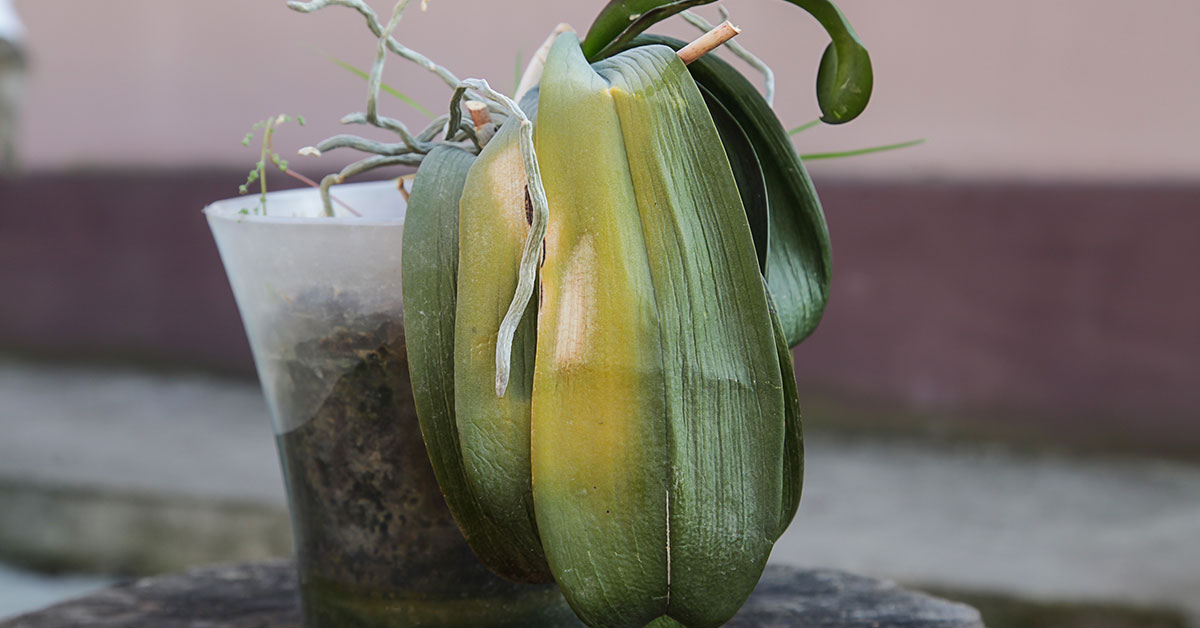
10 Sensitive House Plants You Shouldn’t Water With Tap Water
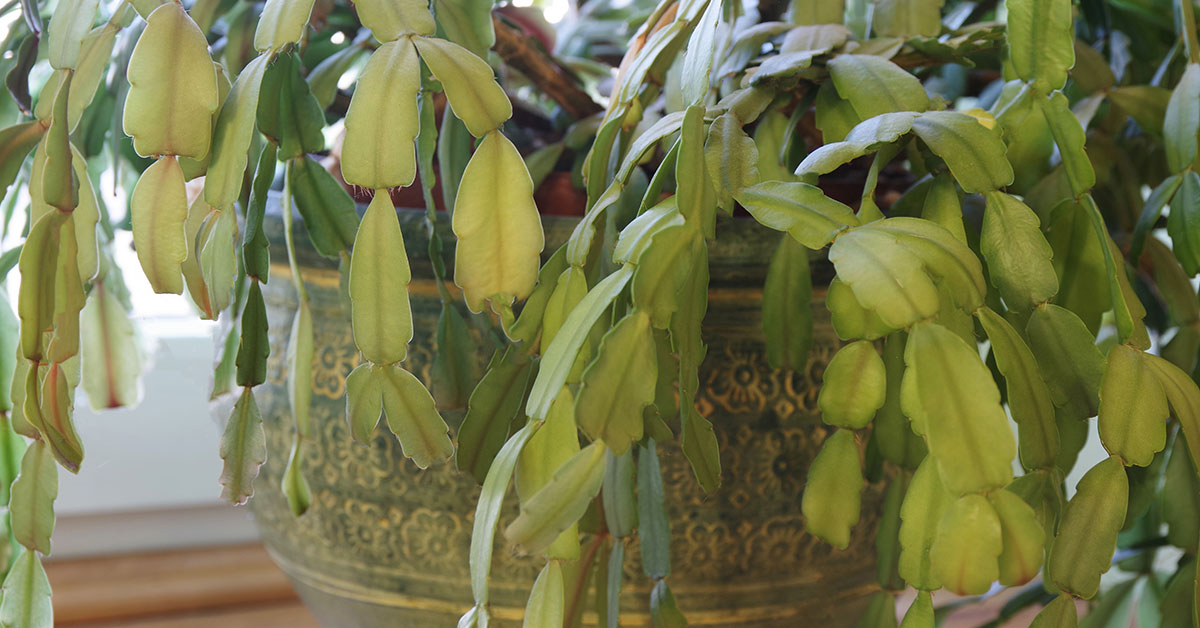
10 Mistakes That Keep Your Christmas Cactus From Blooming
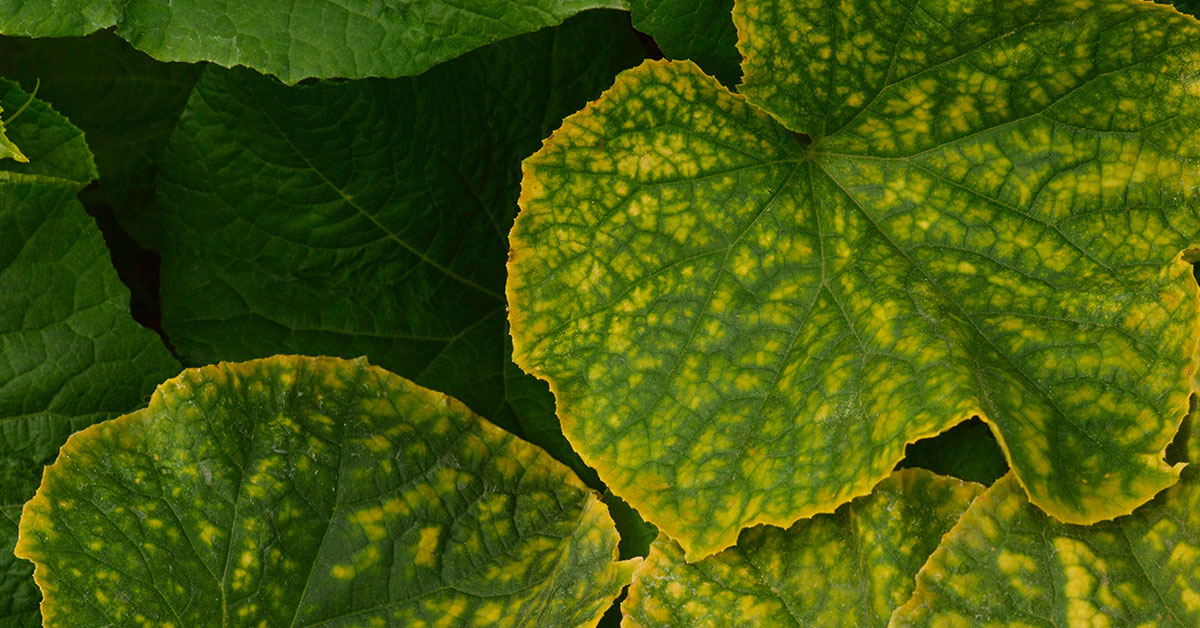
These Are The Biggest Late Summer Garden Mistakes People Make

Watch Out For These Late Summer Garden Pests!
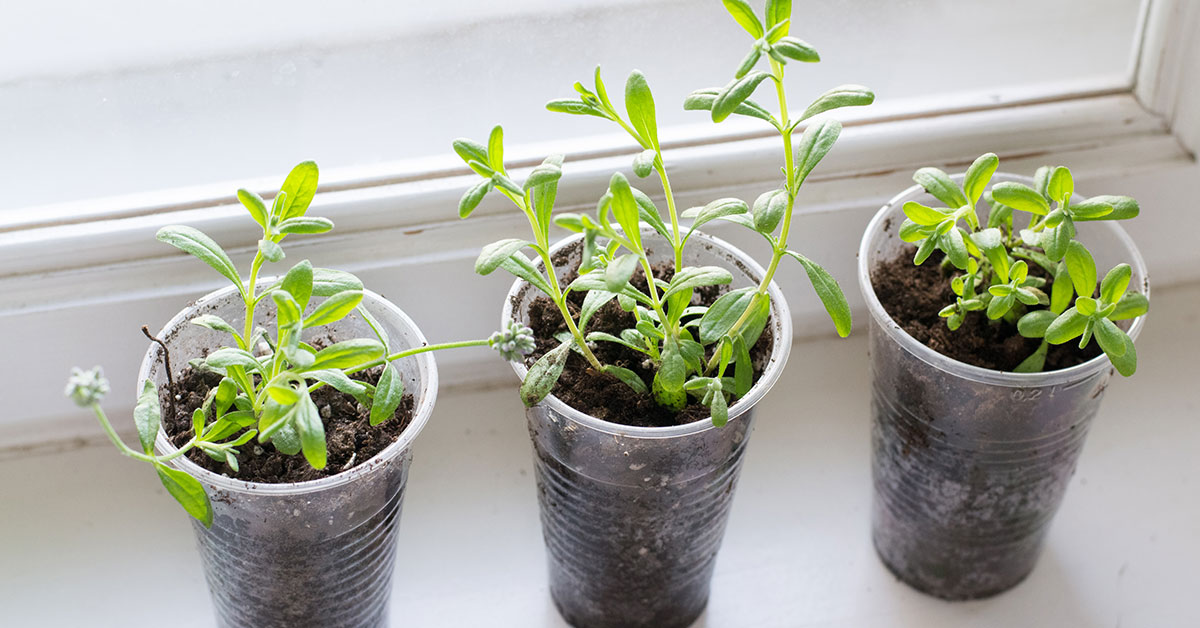
20 Plants To Propagate In August For Next Year’s Garden

These Invasive Plants Will Ruin Your Yard And Are Hard To Get Rid Of
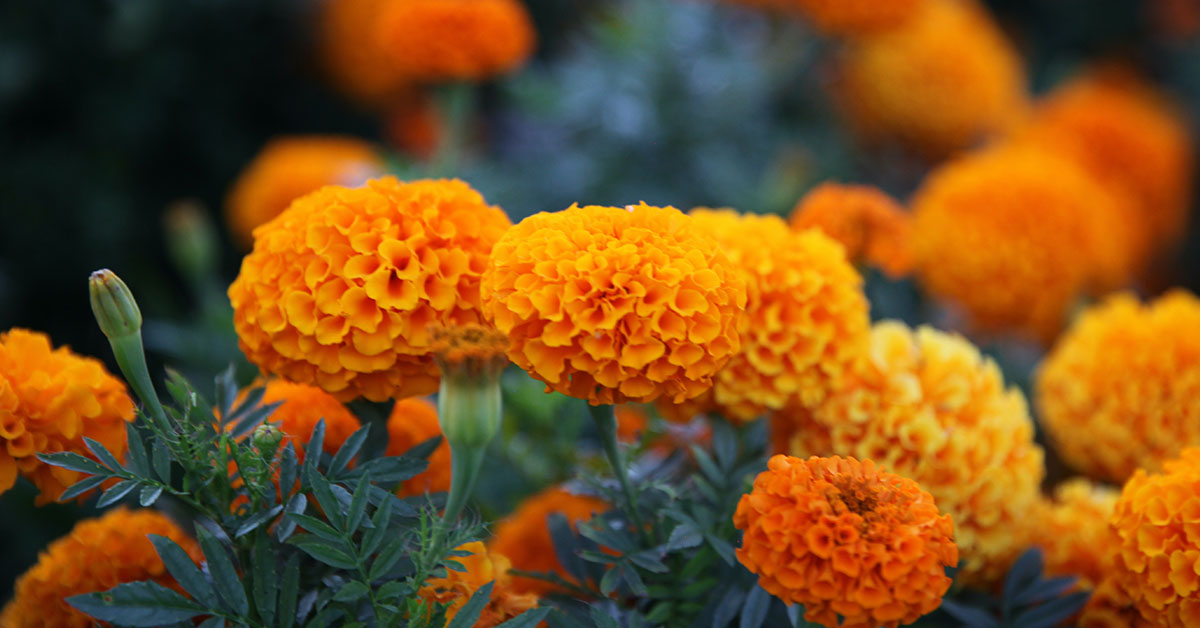
Beware, These Plants Will ATTRACT Mosquitoes

20 Perennials With The Most Colorful Foliage
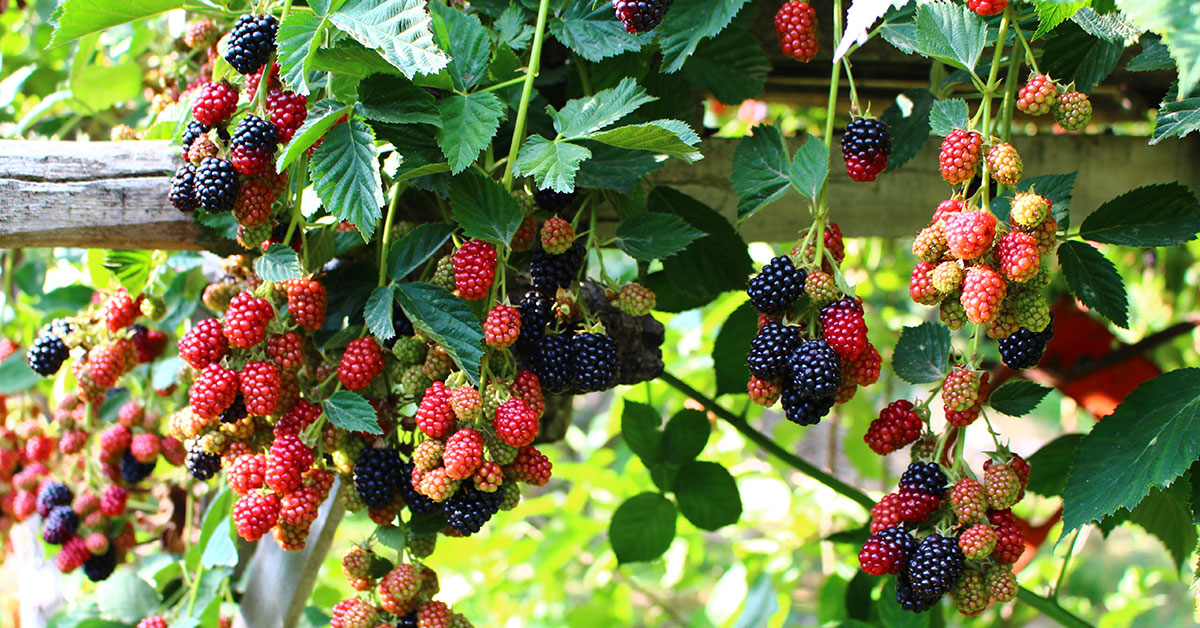
How To Prepare Your Berry Plants For Fall And Winter
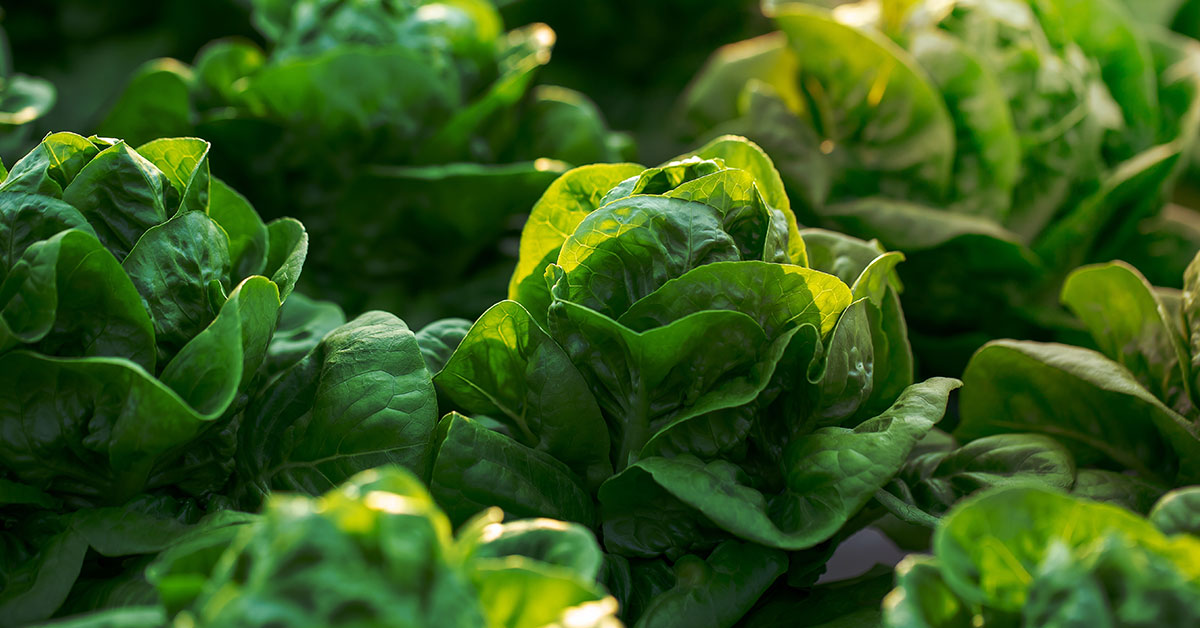
12 Quick-Growing Vegetables for Impatient Gardeners
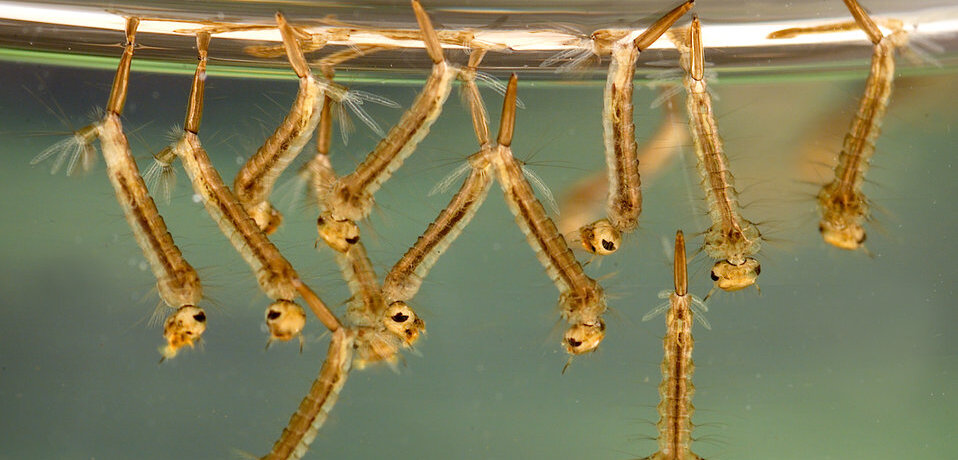
8 Animals & Insects That Eat Mosquitoes (And How To Attract Them)
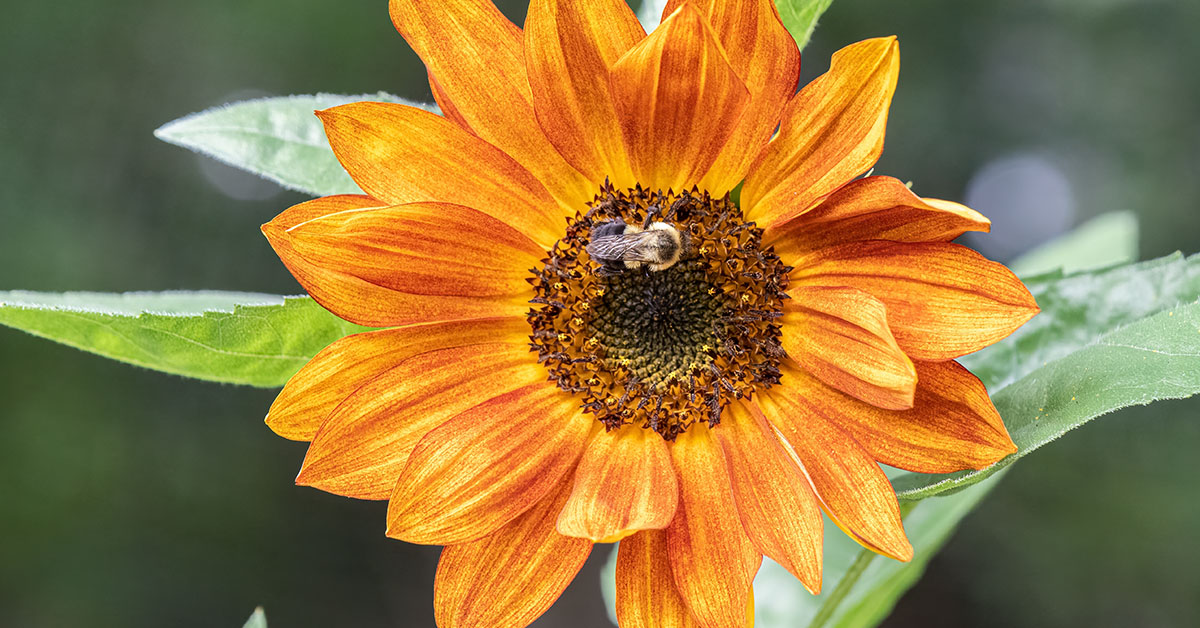
15 Showy Annual Flowers to Brighten Your Garden
Join thousands of gardeners who receive our weekly gardening tips 🌻.

Grow your knowledge, grow your garden
Why Is My Wandering Jew Dying [And What To Do]
- By Connie Adan
- In Gardening Guides , General Tips , Plants , Plants By Zone
- Updated October 26, 2022
It is fun to grow Wandering Jew because there are a lot of plant varieties. They have unique, vibrant colors, perfect for hanging baskets in a garden or patio.
Are you wondering why your plant seems gloomy and dying? Read through this post to know the causes of why your Wandering Jew is dying and learn more about how to grow one.
Wandering Jews may die due to the following reasons:
- Lack of water
- Too much water
- Lousy drainage
- Infestation
These things are sometimes overlooked because this plant is easy to grow, but Wandering Jew still needs to maintain enough moisture, humidity, space, and well-drained soil to stay healthy and strong.
Would you like to learn more about how to take care of your plant? Are you looking for alternatives to keep your Wandering Jew healthy and vigor? You have come to the right post, as we have these answers. Without further ado, let's dive right in!
![wandering jew brown spots on leaves Wandering jew in the pot, Why Is My Wandering Jew Dying [And What To Do]](https://gardentabs.com/wp-content/uploads/2022/08/Why-Is-My-Wandering-Jew-Dying-And-What-To-Do.png)
Why Is My Wandering Jew Plant Dying?
Does your plant look drooping? Drooping can be a sign for different reasons, and it could be a sign that the plant is dying. Here are the reasons why your plant seems sad and dying :
Water Issues
Wandering Due does not receive enough water or is overwatered. Remember that Wandering Jew needs more water in summer than in winter. Consider the climate and weather conditions before watering the plant.
Not Enough Humidity
This plant is tropical and needs humidity to avoid drooping and dying. You can put pebbles on the bottom tray and fill it with water, just enough the level of the stones, then place your plant's pot on them.
Another way is to get a humidifier if your plant is indoors.
Bad Drainage
If the pot has no drainage holes, your plant will drown. It needs water, yes, but too much would kill it. Just water enough to make the soil moist, and use a well-drained pot.
There may be fungi or pests in the soil that affect the rooting system. Check the roots and see if there are signs of rotten roots.
If there is, carefully remove the plant from the soil and remove the discolored and root rot using sharp scissors. Re-pot and use new soil, then wait for the plant to recover.
Why Did My Wandering Jew Turn Red?

Your plant turns red because the variegated leaves have genetic oddities, which are natural for Wandering Jews.
Anthocyanin pigments can cause the leaves to turn shades of pink, red, or purple.
Not all kinds of plants produce this, and it only happens due to several conditions, including changing colors during the fall seasons.
Why Did My Wandering Jews Leaves Turn Brown?
Plants' leaves can lose their colors and have brown spots because of improper watering, and the cause is a lack of humidity. Wandering Jews struggle to thrive in places with dry air.
The leaves will turn brown if the plant continues to receive enough humid air.
During winter, indoor plants are affected by less ventilation and a central heater because these decrease the humidity level in the room.
Here's how to solve this problem:
- Spray water mist on leaves using a spray bottle.
- Put pebbles or small stones on a tray and fill it with water. Place the plant on top.
- Wash your plants using lukewarm water.
- Move the plant to areas with enough humidity.
- You can use a humidifier or home greenhouse kit that traps moisture and warmth.

Click here for a Home Greenhouse Kit on Amazon.
When Should I Water Wandering Jew?
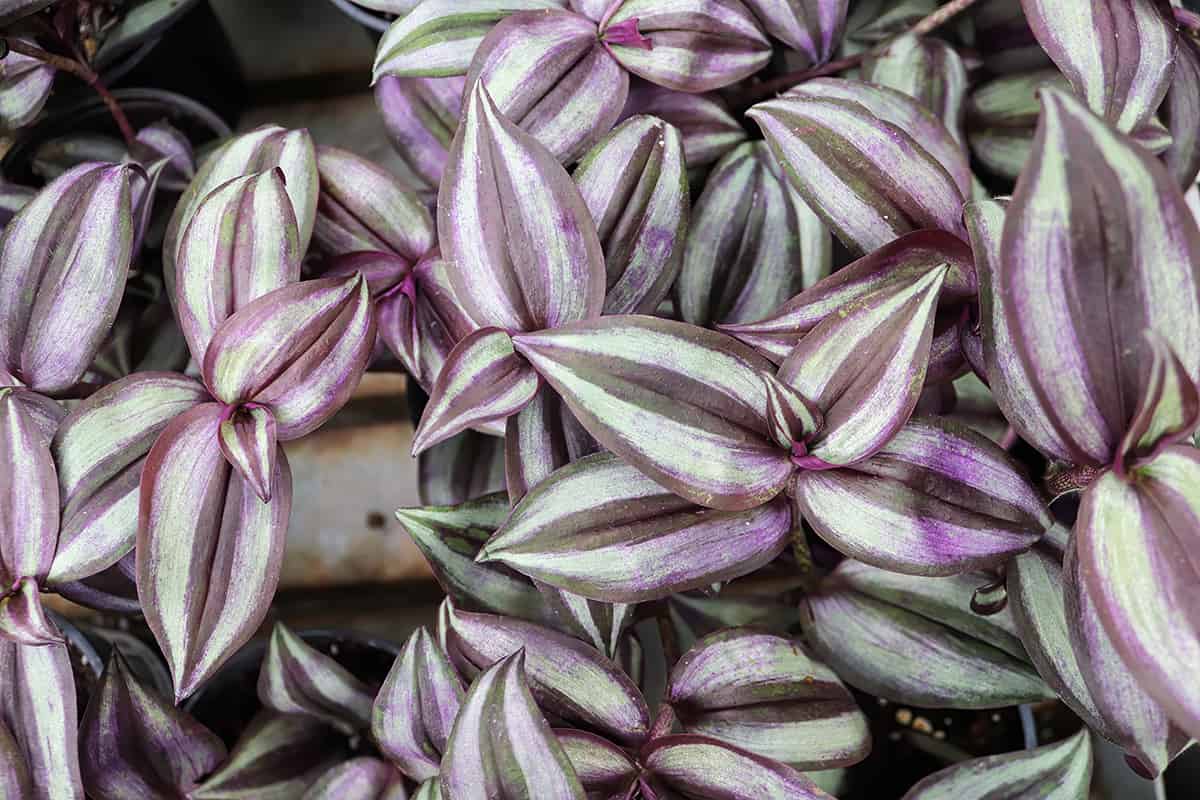
Water Wandering Jew plant once one inch of the top part of the potting soil becomes dry.
Ensure that the pot is well-drained. Also, spraying the plant during the dry season will help to keep the moisture and revitalize it.
What Kind Of Soil Does Wandering Jew Like?
Wandering Jew requires 50% peat moss and a well-draining pot soil mixture. Plant it in a pot with a drainage hole to avoid overwatering. This plant is best placed in a spot at 60 Degrees Fahrenheit temperature.
Can I Root Wandering Jew In Water Propagation?
Tradescantia Zebrina or Wandering Jew will root whether placed in soil or water. Here is the procedure on how to root it in water:
- Cut 6 inches from one of the stems using scissors just right above the leaf node where the new roots will grow.
- Clasp leaves a few inches from the bottom of the cutting, then place them in a clear glass container with water for you to see and monitor the new roots. Ensure that the leaves are out of the water.
- Keep the glass container away from direct sunlight and replace the water every other day.
- Once the roots grow, you can already transfer the plant to potting soil.
How To Grow A Wandering Jew
It is easy to take care of this plant, but it will not hurt to add extra care to make your plant healthy and vigor. Plants still need support and care from their owners.
These are the tips for growing Wandering Jew:
- Wandering Jews are delicate to live in zones 9 to 12. That is why gardeners grow it as an indoor plant. This plant likes bright but indirect sunlight. Too much sunlight will scorch the leaves, and lack of sun will make the leaves color fades. It is best to place the plant facing an area without direct sun during the afternoon.
- This plant requires well-drained potting soil and doesn't like soggy soil. Mix pumice or perlite to help the drainage. Pumice and perlite also help the plant's vigor and growth.
- Water Wandering Jew once the top of the soil looks dry. Water the plant enough that it comes out of the drainage holes. Do not let the ground become soggy due to excessive moisture, and ensure the drainage holes are not clogged. Too much water will result to root rot.
- You can also use fertilizer to add nutrients to your plants. There are available formulated fertilizers for houseplants. Follow the instructions of the manufacturer in using fertilizers.
How Do You Save A Dying Wandering Jew Plant?
It is dying if your Wandering Jew is showing brown spots or drooping. There is still a chance to revive the plant, considering it is not yet dead. Here is how to restore a dying Wandering Jew:
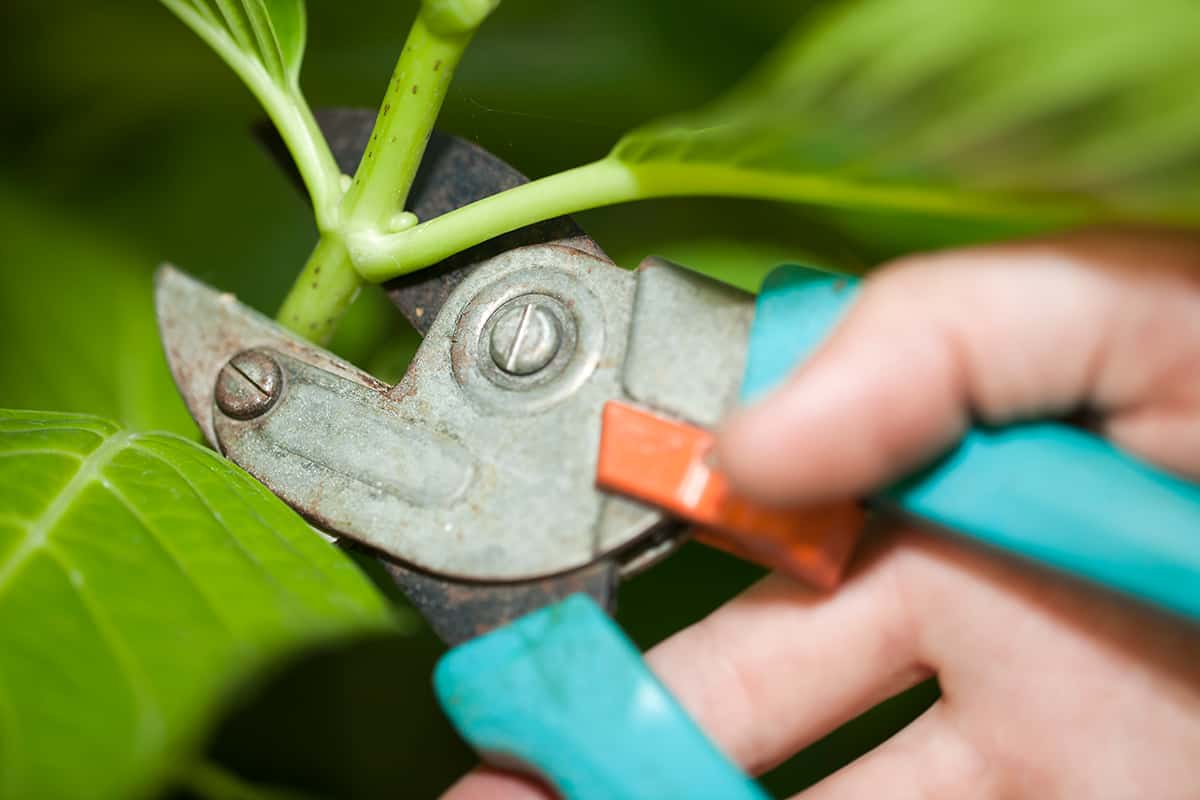
There could be a possibility that the pot is too small or the plant needs fresh soil. Ensure that the pot has enough drainage holes.
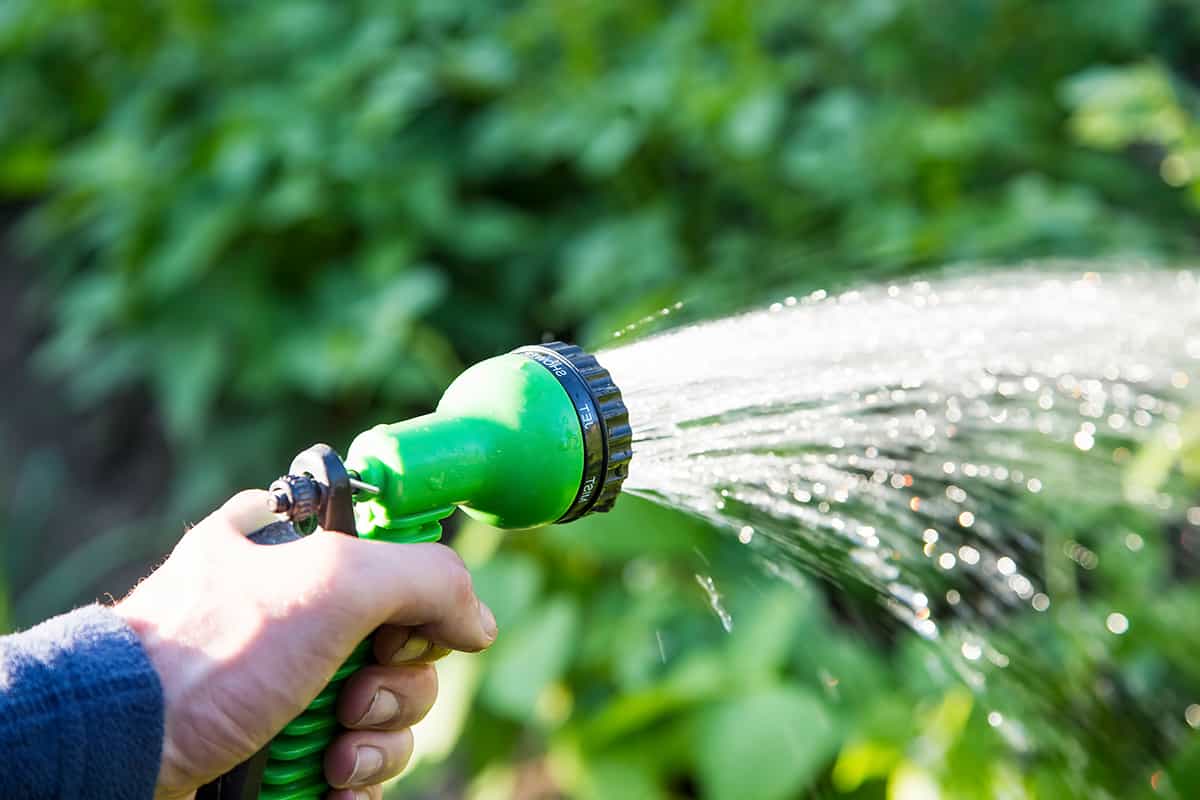
Water the Wandering Jew consistently and lightly for a few weeks until changes and growth appear.
Stem Cuttings
If needed, you can revive the plant by cutting the stems. Prune and place the stems in a glass of water until new roots appear. Place the glass in the shade while waiting for the roots to develop.
Once the roots have grown, plant them in potting soil.
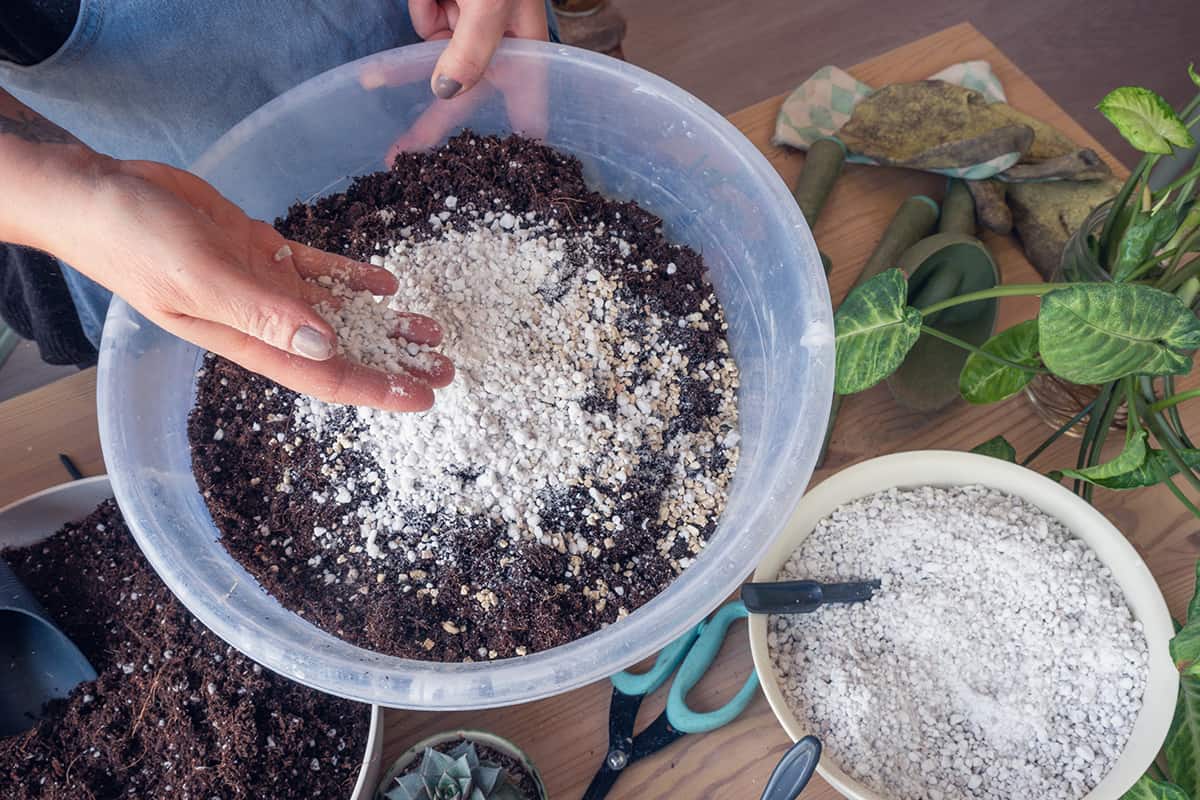
If you repot the plant, add transplanting fertilizer after a few weeks to strengthen the roots and reduce transplanting shock.
What Are The Best Fertilizers For Houseplants
Wandering Jew is commonly grown as a houseplant which requires fertilizers specially made for indoor plants. Here are the best fertilizers to use:
Liquid Indoor Plant Food
This product promotes colorful blooms, strong roots, and green leaf development.

Click here to check Indoor Plant food on Amazon.
Miracle-Gro Water Soluble Plant Food
This fertilizer is easy to feed. It contains nutrients that help plants grow twice as ravenous plants.

Click here to check Plant food on Amazon.
Purified Liquid Fertilizer For Indoor Plants
This liquid fertilizer helps plants' growth and supports the photosynthesis process. It contains essential nutrients to maintain healthy soil.

Click here to check Liquid Fertilizer on Amazon.
To Finish Up
Taking care of Wandering Jew is easy but tricky. It needs a little sun but not too much to avoid burning the leaves. It can also propagate in water but can't get overwatered in soil. Remembering these small things will help plant lovers to maintain the plant's health.
Made it this far? Check out these helpful related posts!
Where To Buy Pumice For Your Gardening Needs
Vertical Gardening Pros And Cons
Leave a Reply Cancel Reply
Your email address will not be published. Required fields are marked *
Name *
Email *
Add Comment *
Post Comment
Laidback Gardener
Welcome to Larry Hodgson’s world
Dying Leaves on a Wandering Jew
Question: I have a wandering jew and the leaves at the base of the plant, in the pot, are almost all dead and dry. Still, the stems continue to grow new leaves from the stem tips and looks very healthy. Why are those at the base of the plant dying?
Answer: The wandering jew (various creeping Tradescantia species and related plants bear that name) is a fast-growing, trailing houseplant usually kept in a hanging basket. However, because it is so fast-growing, it rapidly produces new leaves from the stem tips and the older ones, those at its base, simply die, having done their job.
Almost all plants do this, that is, replace old leaves with new ones: some are just more obvious about it than others. In temperate climates, leaf drop tends to be seasonal, with all the old leaves falling at once in the fall, then new ones appearing just as simultaneously the following spring. In semi-arid and arid climates, the same happens at the beginning of the dry season, with new leaves appearing with the return of the rains.

However, plants from tropical humid climates, like wandering jews (they hail from the jungles of Central and South America), where growth is possible in any season, tend to produce new leaves and lose old ones a few at a time, all year long.
Better Conditions Can Help… A Bit!
If you give your wandering jew excellent growing conditions, such as intense lighting (indoors that is; outdoors, it prefers some shade), high humidity, deep, thorough waterings before the soil dries to a crisp and moderate fertilization, its growth will be denser, therefore the older leaves will be partly hidden by the newer ones and their dying will be less obvious … at first. Eventually, however, the plant’s flaw always ends up catching up with it. The wandering jew is famous for the speed at which it produces dead leaves!
Therefore, if you’re picky about plant neatness, you’ll need to go over your plant and remove the dead leaves every week or so.

Of course, as the oldest leaves are mostly in the pot, while newer leaves are on the stems that hang downwards, this can leave the plant looking pretty awkward after a while. A lot of leafless stems, like so much vegetable spaghetti, lie listlessly in the pot and drip over the edges, while only the bottom half of the plant, towards the tip of the numerous stems, are still fully clothed. If you find that the plant has thus lost its charm, you can restart a new one from stem cuttings . Or, cut the plant way back, to almost to the base, and soon, it will grow anew, fresh as a rose.
An Easier Replacement

If repeated harvesting of dead leaves annoys you, why not switch plants? The wandering jew is always going to need persnickety care: it’s the nature of the beast. So why not substitute a heartleaf philodendron ( Philodendron hederaceum , formerly called P. scandens , P. cordatum and P. oxycardium )? Unlike the wandering jew, its leaves remain in top condition for years (I kid you not!) before dying rather than just a few months! It’s the perfect houseplant for a laidback gardener!
Share this:
9 comments on “ dying leaves on a wandering jew ”.
Here are some key points that highlight the strengths of the article The article provided offers a comprehensive overview of high domain authority ???? ????? ????? ?? ??? blog commenting sites for 2024, which is valuable for anyone looking to improve their SEO through backlinks insightful analysis, and thorough research
ProDentim Real Consumer Reviews I’ve tried so many dental products, but ProDentim is the only one that has given me real results. My teeth are stronger, and I no longer experience sensitivity. It’s such a relief to find something that works! If you’re looking for a reliable dental supplement, ProDentim is the way to go. #ProDentimFan #HealthyTeeth #OralHealth”
I found a wandering jew outside a few years ago that someone had abandoned. It only had a few leaves left, but I rescued it, and it quickly turned into a beautiful plant! It is definitely a high maintenance plant, though, because of all of the leaves die from the pot outwards, and it looks terrible. Every year, I have to cut all of the living tips off, and put them in water for a few weeks before replanting them. I don’t think that I’d ever purchase this plant because of the high maintenance, but mine’s a rescue plant, and has a special place in my heart.
Finally visit here and play this game free robux for roblox so just click here.
Pingback: Why is My Wandering Jew Plant Dying? – Botanique
My plant has tiny new leaves but isn’t maturing
I’m sorry, but I don’t really understand. Could you send me a photo by email at [email protected] ?
The last sentence is the best advice; just cut it back. The viable tips can be rooted as cuttings. When I cut it back, I prefer to top dress with a bit of compost, or for houseplants, with a bit of potting soil. I prefer to bury the cut back mess, so that new growth comes up through the fresh compost or potting soil. If I do not want to grow any more from cuttings, I might drop the debris into a bare spot in the garden, cover it slightly with a bit of compost, and then keep it watered. I do that with some types of iceplant too.
Leave a Reply Cancel reply
Sign up for the Laidback Gardener blog and receive articles in your inbox every morning!
Type your email…
- PRO Courses Guides New Tech Help Pro Expert Videos About wikiHow Pro Upgrade Sign In
- EDIT Edit this Article
- EXPLORE Tech Help Pro About Us Random Article Quizzes Request a New Article Community Dashboard This Or That Game Happiness Hub Popular Categories Arts and Entertainment Artwork Books Movies Computers and Electronics Computers Phone Skills Technology Hacks Health Men's Health Mental Health Women's Health Relationships Dating Love Relationship Issues Hobbies and Crafts Crafts Drawing Games Education & Communication Communication Skills Personal Development Studying Personal Care and Style Fashion Hair Care Personal Hygiene Youth Personal Care School Stuff Dating All Categories Arts and Entertainment Finance and Business Home and Garden Relationship Quizzes Cars & Other Vehicles Food and Entertaining Personal Care and Style Sports and Fitness Computers and Electronics Health Pets and Animals Travel Education & Communication Hobbies and Crafts Philosophy and Religion Work World Family Life Holidays and Traditions Relationships Youth
- Browse Articles
- Learn Something New
- Quizzes Hot
- Happiness Hub
- This Or That Game
- Train Your Brain
- Explore More
- Support wikiHow
- About wikiHow
- Log in / Sign up
- Home and Garden
- Indoor and Patio Plants

A Complete Guide to Wandering Jew Plant Care
Last Updated: June 12, 2024 Fact Checked
- Potting Your Plant
- Caring for Your Plant
Preventing Pests & Disease
Expert q&a, things you'll need.
This article was co-authored by Chai Saechao and by wikiHow staff writer, Dev Murphy, MA . Chai Saechao is the Founder and Owner of Plant Therapy, an indoor-plant store founded in 2018 based in San Francisco, California. As a self-described plant doctor, he believes in the therapeutic power of plants, hoping to keep sharing his love of plants with anyone willing to listen and learn. There are 11 references cited in this article, which can be found at the bottom of the page. This article has been fact-checked, ensuring the accuracy of any cited facts and confirming the authority of its sources. This article has been viewed 654,799 times.
Wandering Jews are beautiful vining plants known for their solid or variegated leaves. These hardy perennials thrive outdoors as groundcover or in pots that allow their tendrils to cascade. They’re relatively easy to care for and incredibly simple to propagate, making them great houseplants! Keep reading for an easy step-by-step guide to Wandering Jew maintenance, from planting to watering to pruning.
Things You Should Know
- Keep your Wandering Jew in a warm spot (around 50–80 °F (10–27 °C)) with lots of bright, indirect sunlight.
- Pot your plant in well-draining potting soil in a container with drainage holes. Keep the soil moist, but not soaking wet.
- Pinch or prune the leaves when the plant gets leggy to promote bushiness, or when any leaves or vines begin to brown or rot.
Potting Your Wandering Jew Plant

- Refer to this map to see if your area's temperatures are warm enough to support a Wandering Jew plant, if you're planning on keeping it outside. According to the USDA, the Wandering Jew plant grows best in zones 9-11.
- If you don’t live in USDA hardiness zones 9-11, keep in mind that you may not be able to keep your plant outside during the winter. You may want to grow it inside instead.

- If you use a hanging basket, remember to turn it daily so it gets equal amounts of sunlight.
- If you’re hanging your plant, choose a lightweight or plastic pot so it won’t fall. This also makes it easier to move inside in case of frost.

- Be careful not to use soil that’s too heavy, as Wandering Jews need light soil that drains well. [3] X Research source
- Buy well-draining soil, or, if you already have heavier soil, mix equal parts soil with compost, or equal parts soil, compost, and peat.
- Purchase a Wandering Jew plant at a gardening or home improvement center, or propagate cuttings from established plants . Wandering Jew cuttings grow very quickly.
Watering, Fertilizing & Pruning Your Plant

- If you’re growing your plant indoors, an eastern facing windowsill is a good spot. The plant will receive bright indirect light throughout the day, but watch to make sure the space doesn't become too hot in the afternoon. If so, move the pot a few feet away or use a curtain to filter the light. [5] X Research source
- If the plant primarily remains outside, find a spot that receives indirect sunlight. This could be on a porch that gets morning sun for several hours. Just make sure that it's not sitting in direct sunlight without any shade for most of the day.

- If you've set your pot on a saucer, empty the saucer when it fills.
- The plant's growth will slow in the winter months, meaning it needs to be watered less often. Simply let it remain a little dry for a bit longer before watering.
- Some people find it convenient to put self-watering aqua globes in their plant pots; however, these glass globes require cleaning and regular filling. You'll still need to monitor your plant's moisture if you choose to use them.

- Read the container's instructions carefully before fertilizing, as some liquid fertilizers may actually be powders requiring you to mix in water.

- The best time to prune is during the spring and summer months, when the plant is putting on the most growth. After you've pruned, give the plant a chance to put on new shoots and fill in.
- If you find your plant is too dense and bushy, you'll need to prune around the base so that the plant can get adequate circulation and sunlight.

- Generally, expect to repot your plant annually, but keep an eye out for signs your plant has outgrown its container within that time frame: once you see roots creeping out from under the plant through the drainage holes, or popping up through the soil, it’s time to repot. [10] X Trustworthy Source Penn State Extension Educational organization dedicated to delivering science-based information to people, businesses, and communities Go to source

- Try to use distilled or bottled water when misting the leaves for the best results.
- Brown leaves can also be a sign that your plant is getting too much sunlight. In this case, make sure your plant is not directly in the sun by moving the pot or placing a filter, such as a curtain, in between the plant and the window.

- Root rot can spread very quickly, so act fast when you see signs of it. It can be heartbreaking to cut away a large chunk of your plant, but if you wait too long, you could lose the whole plant. [13] X Research source
- Other signs of root rot include spongy, black roots.

- Though "Wandering Jew" is the most common name for this plant, some people may find this term offensive. Consider using "wandering dude" or "inch plant" instead. Thanks Helpful 2 Not Helpful 2
- "Wandering Jew" doesn't refer to just one plant: it refers to a variety of Tradescantia species, the 3 most common of which include Tradescantia fluminensis ("Quicksilver"), Tradescantia pallida ("Purple Heart"), and Tradescantia zebrina ("Tricolor"). Care is the same for all 3. Thanks Helpful 1 Not Helpful 1

- Be careful when pinching or pruning your plant. Wandering Jew sap can cause skin irritation in some people and allergic reactions in dogs. To be safe, wear gardening gloves when pruning your Wandering Jew. [14] X Research source Thanks Helpful 0 Not Helpful 0
- Wandering Jew cuttings or a plant
- Well-draining potting soil
- Pot or hanging basket
- 10-10-10- fertilizer
- Aqua globes (optional)
- Pruning shears (optional)
- Gardening gloves
You Might Also Like

- ↑ https://houseplantcentral.com/tradescantia-zebrina-care-info/
- ↑ https://www.almanac.com/plant/inch-plants
- ↑ https://getbusygardening.com/wandering-jew-plant-care/
- ↑ https://www.weekand.com/home-garden/article/indirect-light-plants-18005506.php
- ↑ https://www.almanac.com/plant/wandering-jew
- ↑ https://www.weekand.com/home-garden/article/use-101010-fertilizer-garden-18057536.php
- ↑ https://www.gardeningknowhow.com/houseplants/wandering-jew/growing-wandering-jew-plants.htm
- ↑ https://extension.psu.edu/repotting-houseplants
- ↑ https://www.gardeningknowhow.com/plant-problems/disease/treating-root-rot-gardening-tips-for-housplants.htm
- ↑ https://www.wildinteriors.com/blog/2019/10/30/treating-root-rot-and-soft-rot-in-houseplants
- ↑ https://www.weekand.com/home-garden/article/wandering-jew-plants-dangerous-dogs-18063157.php
About This Article

To take care of your Wandering Jew plant, place it by an east-facing window so that it gets a combination of direct and indirect sunlight. Keep the soil moist, but not soaked, and water the soil instead of the top of the plant to avoid rot. You should also fertilize the Wandering Jew plant every two weeks with a liquid 10-10-10 fertilizer. To keep the plant from getting leggy, trim back the stems in the spring and summer. Did this summary help you? Yes No
- Send fan mail to authors
Reader Success Stories
Nancy Gibson
Jun 6, 2016
Did this article help you?
Sherry Clark
Mar 30, 2016
Sep 23, 2016
Beverly Cox
May 18, 2016

Featured Articles

Trending Articles

Watch Articles

- Terms of Use
- Privacy Policy
- Do Not Sell or Share My Info
- Not Selling Info
Don’t miss out! Sign up for
wikiHow’s newsletter
Grow. Play. Every Day!

- House & Home
- Houseplants
Wandering Jew Care: How to Grow a Flourishing Inch Plant (Tradescantia Zebrina)
Tradescantia zebrina (commonly known as wandering Jew, spiderwort, or inch plant) is popular for a reason: This beginner-friendly houseplant is low-maintenance and grows quickly. It’s also super easy to propagate more plants so you can fill your home with more of the colorful striped foliage the species is known for.
Written by Linda Ly

When it comes to vigorous, colorful, and easy-to-grow hanging houseplants, there aren’t many that can compare to Tradescantia zebrina (known more commonly as wandering Jew—and I’ll touch on the history of that name below). Whether you’re a houseplant beginner or a veteran, most indoor gardeners have owned one of these potted plants at some point.
Keep reading for everything you need to know about Tradescantia zebrina and growing this stunning houseplant in your own home.
Disclosure: If you shop from my article or make a purchase through one of my links, I may receive commissions on some of the products I recommend.

About inch plants
Natural habitat.
Tradescantia zebrina is a native of Central and South America, from Mexico down to Colombia, as well as the Caribbean. Here, it forms part of the undergrowth in lightly forested and often very moist areas. It can form very dense, wide mats thanks to its creeping growth pattern and ability to throw roots extremely quickly.
Unfortunately, its vigorous growth has also made Tradescantia zebrina an invasive plant in some regions. This includes Hawaii, Brazil, and Australia, where the species easily takes hold in moist, forested areas.
As a 2019 study carried out in the Brazilian Atlantic Rainforest notes, this is problematic due to the species choking out native plants.
Some of the above was caused by careless gardeners allowing bits of the plant to get into the wild, where they quickly root. If you’d like to grow spiderworts like this one in your garden, please make sure to dispose properly of any trimmings left after pruning!
This also applies to zebrina’s popular cousins, like Tradescantia fluminensis, T. pallida, and T. spathacea.
Description
It’s not difficult to see why Tradescantia zebrina gained popularity as a houseplant. Wandering spiderwort plants (not to be confused with spider plants , another beginner-friendly species) are low-maintenance and grow just about anywhere—they even just grow in water !
Easy care and quick growth aside, spiderworts are also just good-looking plants. The pointed, oval leaves on thin, fleshy stems overlap slightly and are characterized by their zebra pattern in purple and silvery green. The leaf undersides are deep purple in color and the tiny, three-petaled flowers are bright pink.
Although this species is naturally a creeping plant, it’s often grown indoors in hanging planters. As long as the plant is provided with enough light, the foliage will be very dense and brightly colored, forming a spectacular waterfall that can reach more than 3 feet in length.
What’s in a name? In the case of common houseplants, sometimes a lot.
Tradescantia zebrina is a classic houseplant (I found mention of it in a 1964 German book about houseplants, but it’s probably been around longer than that!) and among most English speakers, it has long been known as wandering Jew. This is probably a reference to the “wandering” nature of the plant, as it does have a creeping growth pattern.
The legend of the wandering Jew is hundreds of years old and is now commonly considered to be rooted in antisemitism. It describes a Jewish man cursed to walk the planet until the Second Coming because he taunted Jesus on his way to the cross.
Because of this, the plant name has partly fallen out of fashion and has been the source of much debate in the plant world over the past few years.
Some plant enthusiasts have embraced the alternative “wandering dude,” which I personally think is a great option.
“Inch plant” (houseplant enthusiasts don’t agree on whether this refers to the fact that it can grow an inch a day, or that you only need an inch of stem to propagate it), “spiderwort,” or “wandering spiderwort” are also popular alternatives, though these are common names for other Tradescantia varieties, such as Tradescantia Nanouk.
The best way to avoid any confusion is to just stick to the scientific name.

Inch plant varieties
There are three subspecies of inch plant (wandering Jew): Tradescantia zebrina var. zebrina, var. flocculosa, and var. mollipila. Unsurprisingly, after it having been a popular houseplant for so many years, nurseries have also managed to create a whole bunch of cultivars through selective cultivation.
A few of the popular Tradescantia zebrina cultivars you may come across in your local plant store include, but are certainly not limited to:
- Tradescantia zebrina ‘Quadricolor’: Yep, as the name suggests, this one adds an extra color to the mix. The leaves are cream, pink-purple, light green, and dark green.
- Tradescantia zebrina ‘Burgundy’: Characterized by its very dark purple coloration.
- Tradescantia zebrina ‘Silver Plus’: Less purple, more shiny silver.
- Tradescantia zebrina ‘Red Gem’: Less silver, more intense (light) purple.
- Tradescantia zebrina ‘Purple Joy’: Less silver, more dark purple.
- Tradescantia zebrina ‘Tikal’: A rare, naturally occurring variety that collectors pay a pretty penny for.
Do keep in mind that most of these cultivars aren’t patented and the amount of mislabeling and variation within a cultivar are both huge. Just growing your wandering Jew in lower-light conditions can completely change the way it looks, so it’s not surprising that confusion sometimes reigns supreme.
Luckily, care is the same across all cultivars, so your best bet is to just enjoy your plant even if you’re not sure what Tradescantia variety you’re dealing with!
Where to buy wandering Jew plants:
- California Tropicals
- Daylily Nursery
- The Green Escape

Caring for an inch plant
Light and temperature.
It’s important to provide your Tradescantia zebrina with enough light. It’s tempting to use plants to brighten up dark, shaded spots in your home, but that just doesn’t work with this one: It loses its dense growth pattern and beautiful coloration in low light.
To prevent your wandering dude plant from growing sparse and green, place it near a window that gets bright indirect light. Some full sun isn’t a problem either, but do make sure you acclimate it gradually to a higher light location.
Temperature-wise, this species is a lot hardier than many of the tender tropicals we like to grow in our homes (like Anthurium andraeanum and Begonia maculata ).
Wandering dude plants can handle a very wide range of temps, making it perfect for those chillier windowsills that your other plants may not appreciate. Room temperature is ideal, but anything between 50°F to 85°F will keep them happy.
Water and humidity
Your Tradescantia zebrina will appreciate lightly moist soil. You can water a bit more during the summer months, when the plant is actively growing and needs a lot of moisture, and less during winter, when soil tends to take significantly longer to dry.
If you’re not sure whether it’s time to water your wandering Jew plant yet, you can always turn to the age-old trick of sticking a finger in the soil.
- If it still feels damp, wait a little longer, until the first inch or two has dried.
- If it feels bone dry, you’ve waited too long; you may also see limp leaves on your plant at this point. It’ll bounce back, but not always without lasting damage.
- If the soil feels wet, you watered too much and need to keep an eye out for root rot.
As for humidity, given its rather wet natural habitat, wandering Jew does appreciate higher air moisture levels. The great thing is, though, that it doesn’t demand it. As long as you keep its soil lightly moist and the air isn’t extremely dry, your plant should do well.
Soil and planting
Wandering Jew is not fussy about its potting mixture at all. I’ve grown it in pure houseplant potting soil with no additives. If you do want to take things to the next level, you can add some perlite and/or peat moss, although this is really not a must.
Most houseplant enthusiasts like to place their wandering Jew in a hanging planter so they can enjoy the look of the leaves cascading down. This is not a must, though. You can also emphasize the species’ creeping growth habit by filling up a large, shallow planter, growing it in a terrarium, or even keeping it in water on a semi-permanent basis.
Recommended products for wandering Jew plant care:
- FoxFarm Ocean Forest Potting Soil
- Espoma Organic Potting Mix
- Perfect Plants Organic Perlite
Fertilizing
Like most other houseplants, Tradescantia zebrina appreciates a bit of fertilizer during the growing season, which extends from spring to early fall. You can use a normal houseplant fertilizer according to the instructions on the bottle.
Don’t fertilize during the winter months unless your plant is growing well. It doesn’t need extra nutrients if it’s inactive.
Recommended fertilizers for wandering Jew plants:
- Houseplant Resource Center Liquid Fertilizer for Houseplants
- Instant Biologics Instant Plant Food (Fizzing Nutrient Tablets)
- Maxsea All-Purpose Seaweed Plant Food
Pruning
There’s a good chance you’ll have to prune your Tradescantia zebrina regularly, because as I mentioned, this is a very quick grower. It also roots very easily, so any trimmings can be replanted! I’ll describe how to do this in the section on propagation below.
Aside from stem trimming, you can remove any dead leaves, which are bound to pop up from time to time in very dense plants like this species.
Dividing or repotting
Inch plants don’t grow by producing plantlets at their base like many other houseplants (such as spider plants ) do. Instead, inch plants spread by rooting along the stems.
This means that division is not really the way to go; keeping these plants manageable is usually done through pruning. You can shape your plant by pinching off any long, leggy stems to create a fuller appearance and control its spread.
You’ll notice that Tradescantia really doesn’t mind being a bit cramped in its planter. Still, it’s a good idea to provide your plant with some fresh soil every year or two by repotting it.

Propagating an inch plant
If you’ve never propagated a houseplant before, this is truly one of the best species to start with. It’s known for rooting extremely quickly in both water and soil, meaning it’s easy to fill endless planters to keep or give away.
All you need to propagate your Tradescantia zebrina is a pair of clean scissors. Here’s how you do it:
- Snip the ends off existing branches. An inch or two with a few leaves works best.
- Remove the leaves at the bottom so part of the stem is exposed.
- Place the cutting in a glass of water to root or plant it directly in soil. You can put cuttings back in the mother plant’s pot to give her a fuller appearance on top.
- It can take a little longer during the winter months, but the first roots should appear within a week or so. You can give soil cuttings a slight tug to verify they’ve rooted.
- Once the first signs of new foliage appear, you’ll know your propagation attempt has been a success!
- If you propagated in water, you can leave the rooted cuttings in water almost indefinitely, although you can also pot them up in fresh soil.

Common questions about inch plant care
How do i make a wandering jew plant bushy.
By their very nature, wandering Jew plants are not bushy. Their creeping growth habit means they naturally grow leggy over time, especially in containers.
However, you can mimic a fuller appearance by strategically pinching off any long, spindly stems to shape the plant more. These stems can also be replanted near the mother plant.
As the baby plants grow, they’ll help fill in sparse areas and create the illusion of a bushy wandering Jew.
How long do wandering Jew plants live?
Wandering Jew plants have a limited lifespan of just a few years, and as a potted plant, you’ll notice your wandering Jew becoming very leggy after just two to three years.
Unlike other fast-growing plants that benefit from pruning, cutting back a wandering Jew doesn’t work well to renew its growth; it simply controls the spread.
The best way to keep your plant coming back year after year is to propagate new plants from stem cuttings, which—fortunately—is super easy with a high success rate.
Is wandering Jew perennial?
Wandering Jew (Tradescantia zebrina) is a trailing evergreen perennial in its native habitat (USDA hardiness zones 9 through 12). Where it’s not winter hardy, wandering Jew is grown year-round as a houseplant.
Are wandering Jew plants toxic to cats and dogs?
Wandering Jew is not considered outright toxic, but it can cause some skin irritation. If your pet gets into your plant, don’t worry too much, although it can be a good idea to have a look in its mouth to make sure there’s no excessive swelling. Be sure to offer water. To prevent skin rash, it can be a good idea to wear gloves if you need to handle your wandering Jew plant. This especially applies if you have sensitive skin.
https://www.cabi.org/isc/datasheet/110354
Racism in Taxonomy: What’s in a Name?
Chiba de Castro, W. A., Xavier, R. O., Garrido, F. H., Romero, J. H., Peres, C. K., & da Luz, R. C. (2019). Fraying around the edges: negative effects of the invasive Tradescantia zebrina Hort. ex Bosse (Commelinaceae) on tree regeneration in the Atlantic Forest under different competitive and environmental conditions. Journal of Plant Ecology, 12(4), 713-721.
Encke, F. (1964). Pflanzen fur Zimmer und Balkon; Auswahl, Pflege, Vermehrung.
I'm a plant lover, passionate road-tripper, and cookbook author whose expert advice and bestselling books have been featured in Time, Outside, HGTV, and Food & Wine. The National Parks Cookbook is my latest book. Garden Betty is where I write about modern homesteading, farm-to-table cooking, and outdoor adventuring—all that encompass a life well-lived outdoors. After all, the secret to a good life is... Read more »
We bought a full grown Bolivian Jewel mid summer last year. It was in a 14” raised pot and flowing 2 foot over the sides. It was beautiful next to our fountain outside. We live in Minnesota so we had to discard it in the late fall since we had no place to care for it in the house. Since we can’t find another like it we’d like to plant one from scratch but how. We still have the pot and riser but have no idea how to start from that. One plant, a few or just how many to make a bushy over grown plant so it looks like the one we purchased last year. Does this make sense or should we just forget it since it is already the middle of May. The greenhouse that we bought it from last summer doesn’t have any this year, just small ones in 4” pots. Thanks
If you can only grow it as an annual (and won’t be overwintering it indoors), you can plant a few smaller ones together to make them look fuller as they grow.
It seems counterproductive to talk about the problematic origin of the name wandering Jew, recommend multiple alternative names (including scientific), but then continue to call it wandering Jew in the rest of the article. If the name is anti-Semitic just set a good example and use a different name.
Leave a Reply Cancel reply
Your email address will not be published. All fields are required.
Save my name and email in this browser for the next time I comment.
This site uses Akismet to reduce spam. Learn how your comment data is processed .
Recommended Reads
- Garden of eatin’
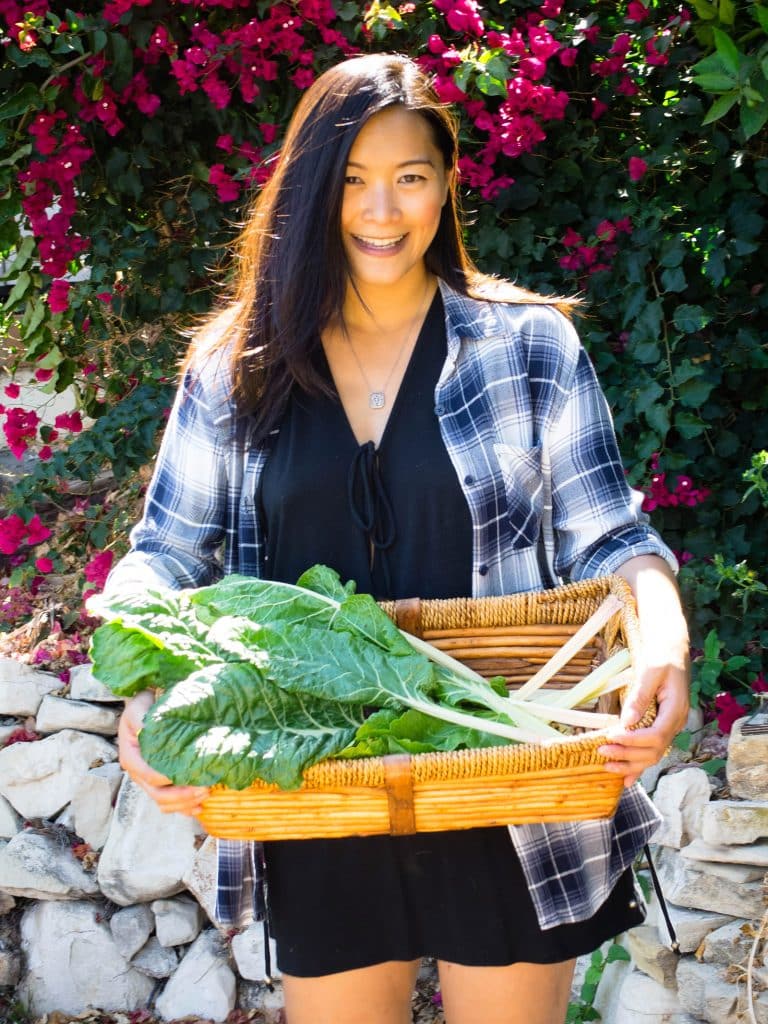
What I Always Plant Midsummer for an Epic Fall Harvest
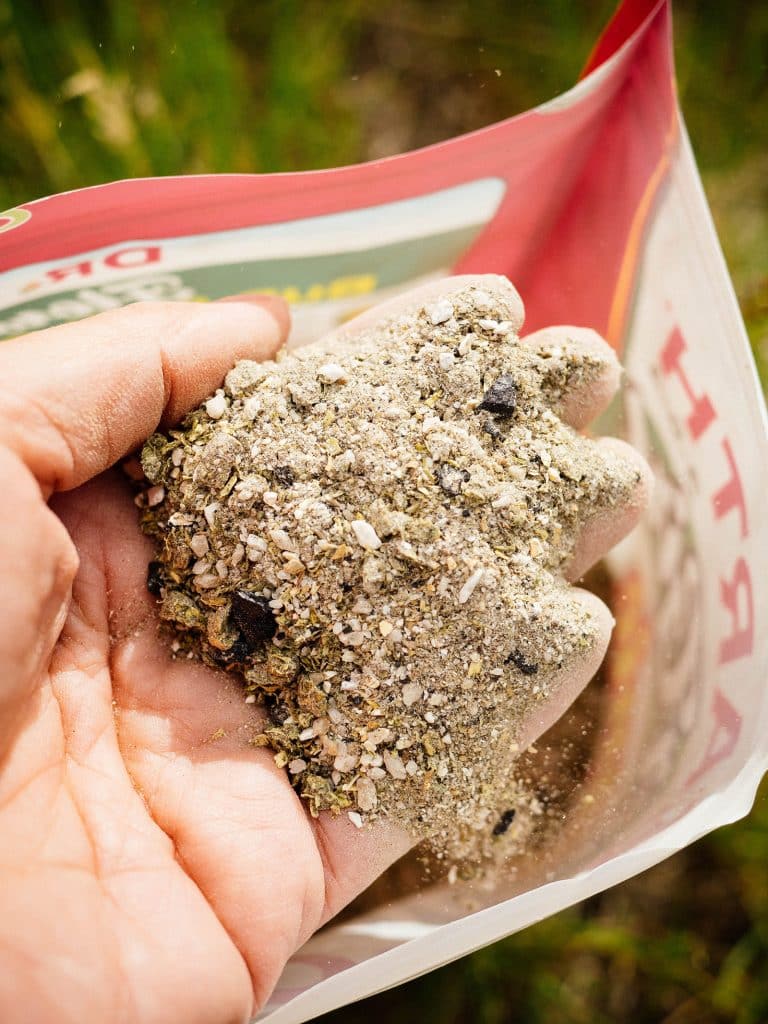
How (Not) to Fertilize Your Plants This Summer
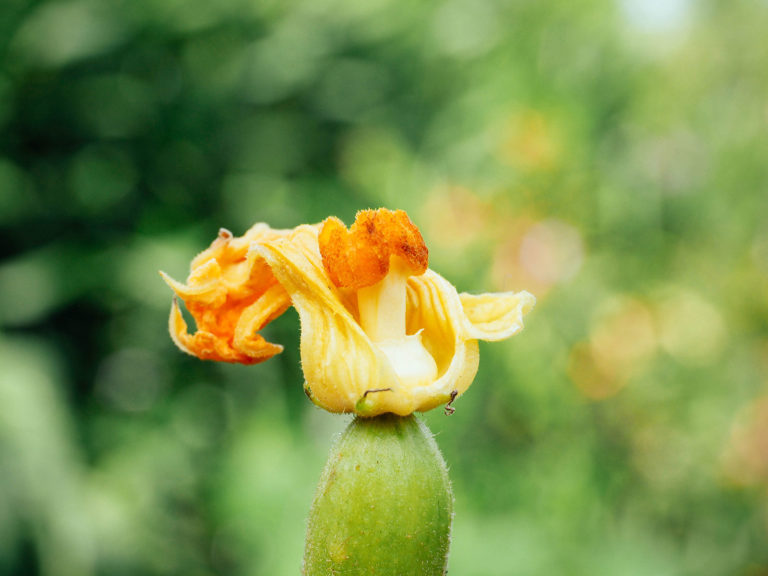
How to Pollinate Squash by Hand (and Why Your Plants Have Lots of Flowers but No Fruits)
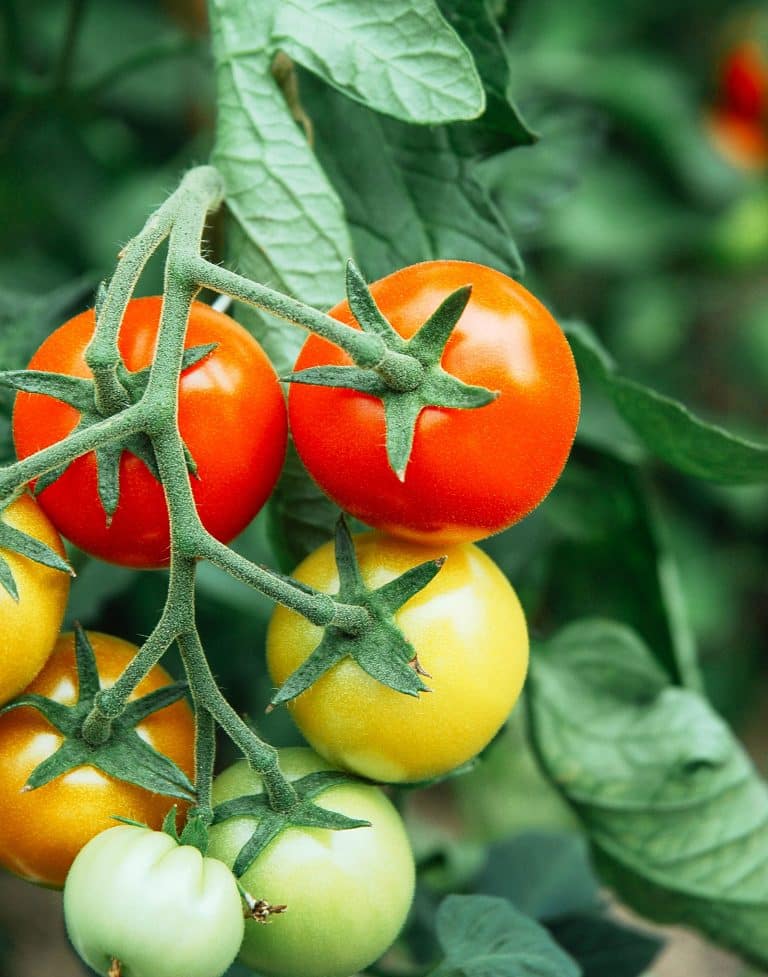
The Best Time to Pick Tomatoes for Peak Quality (It’s Not What You Think!)

What You Should Know Before Buying Land (My Real-Life Tips)

Construction Loans: What I Wish I’d Known As a First-Time Borrower

Dark Room? 9 Actually Low-Light Plants That Don’t Need a Lot of Sun

Getting Rid of Fungus Gnats: 11 Remedies That Really Work

Easy Peasy Homemade Tomato Sauce (No Peeling Required)
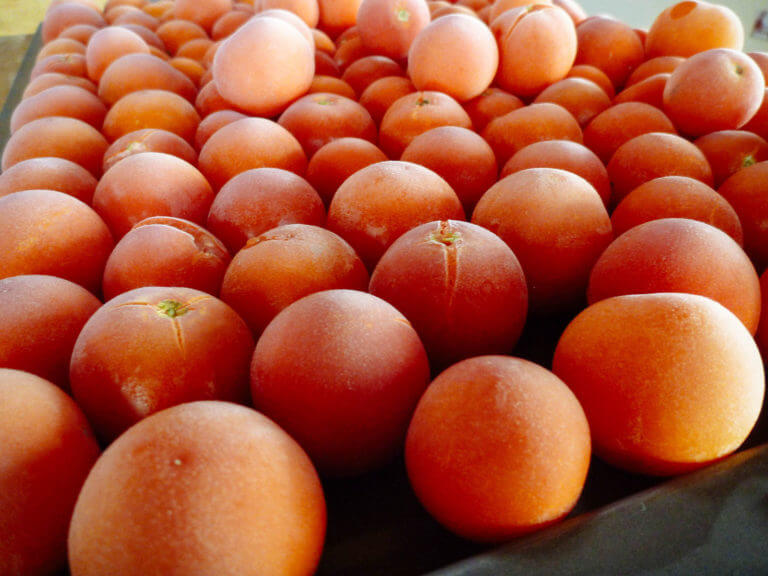
This Is the Best Way to Freeze Fresh Tomatoes

Fiery Fermented Hot Sauce: 3 Simple Variations
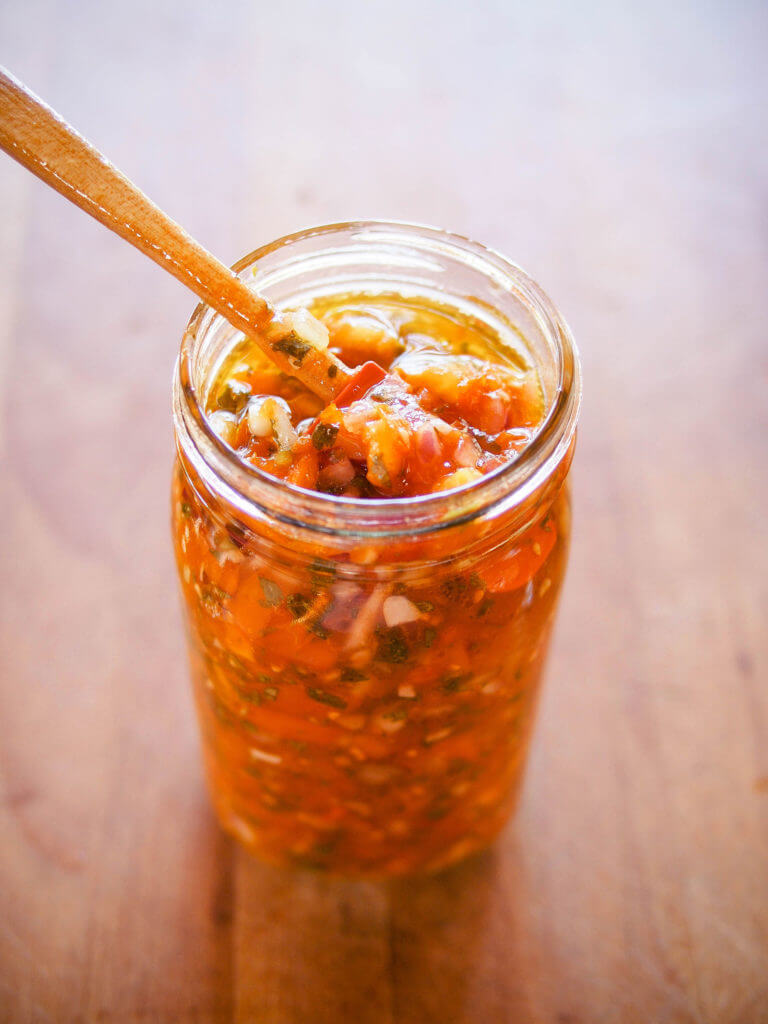
Spicy Fermented Salsa: Take Tomatoes to the Next Level
Want to level up your garden this year.
Sign up for my free, never-boring newsletter and every week you’ll get the game-changing emails you wish you’d gotten sooner.
- About Linda Ly
- What’s In My Garden
- Lazy Gardening Academy
- Sponsorships
- Site Policies

Back to the top
Disclosure: Garden Betty independently selects products to feature on this site. I may receive a commission when you buy something through one of my links. As an Amazon Associate, I earn from qualifying purchases.
© 2024 Garden Betty. All Rights Reserved.


Wandering Jew Plant (Tradescantia zebrina): Types, How to Grow and Care
Sharing is caring!
Plants with trailing and creeping habits are some of the best plants to keep. They are fast-growing and make thick carpet of groundcovers for gardens in no time and they also create striking hanging indoor plants.
Among the all-time best trailers to grow is the wandering jew. Easy to maintain and drapes beautifully, this colored plant will make any space more inviting and interesting.
Medicinal Properties
Propagation and maintenance, what is a wandering jew plant.
Tradescantia is one of the 37 genera under the plant family Commelinaceae (1). Some of its 75 species are commonly called ‘wandering jew’ (also known as inch plant), a name they adapted due to their long lifespan like the Jewish character from a Christian folklore.
Another name for this group of herbaceous perennial plants is ‘spiderwort’ after the spiderweb-like sap they produce when the stem breaks. They are native to Canada, Mexico, and Argentina and have been naturalized in other parts of the world (2).
The most common tradescantia grown ornamentally is the T. zebrina also previously called Zebrina pendula . It has long fleshy stems where the wandering jew plant leaves and roots appear. The lance-like leaves are a mixture of green and purple with silver stripes on the upper side and deep purple under (3). The plant grows close to the ground and can only reach 20 to 30 cm high.
Does Tradescantia Zebrina Flower?
The wandering jew is considered an ornamental plant primarily because of its showy colorful foliage but the plant does produce pink flowers.
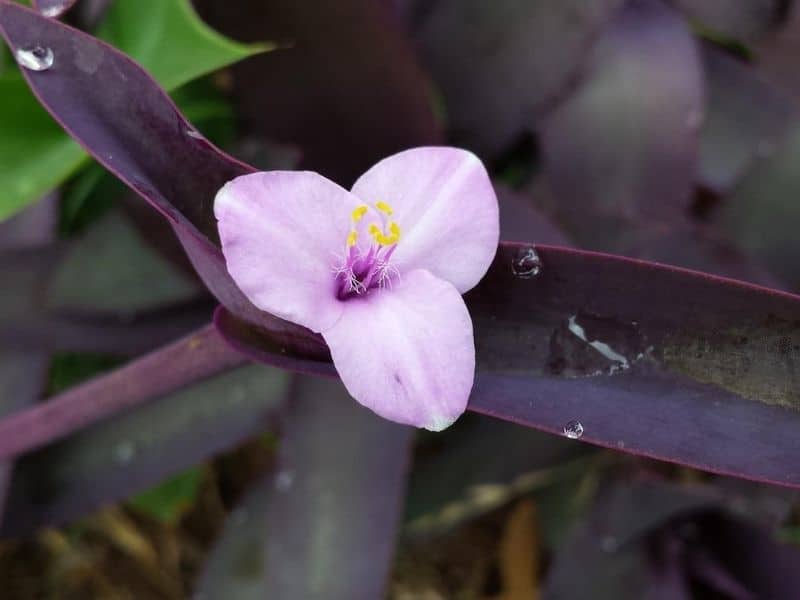
Small three-petaled pinkish purple flowers appear sporadically throughout the year (4). The resulting fruit is a capsule containing tiny brown seeds.
Is it Toxic to Pets?
Spiderworts are normally harmless plants but they contain toxic properties that may cause mild gastric problems and dermatitis to pets. Although they don’t lead to anything serious, it will be safe to keep the plants out of reach of pets and to keep the hands protected when dealing with the sap of the plant.
Because of the plant’s hardiness and adaptability to different environments, the wandering jew establishes well, in fact so well that it can be considered an invasive species. In countries like Australia, the plant has the capacity to invade natural vegetation. Although growing them is not prohibited, everyone is obliged to keep the plant’s growth under control (5).
Studies showed that Tradescantia has significant effects as an anticancer, antioxidant, and antibacterial medicinal plant. In traditional Chinese medicine, the wandering jew plant is highly valued as treatment for kidney failure.
The extract from the whole plant is cooked with dates, ginger, and water and consumed by patients. The plant is also known to treat high blood pressure, cough, urinary tract infection and tuberculosis (1).
How to Grow and Care for a Tradescantia
Here’s how to care for a wandering jew plant, one of the easy house plants to own.
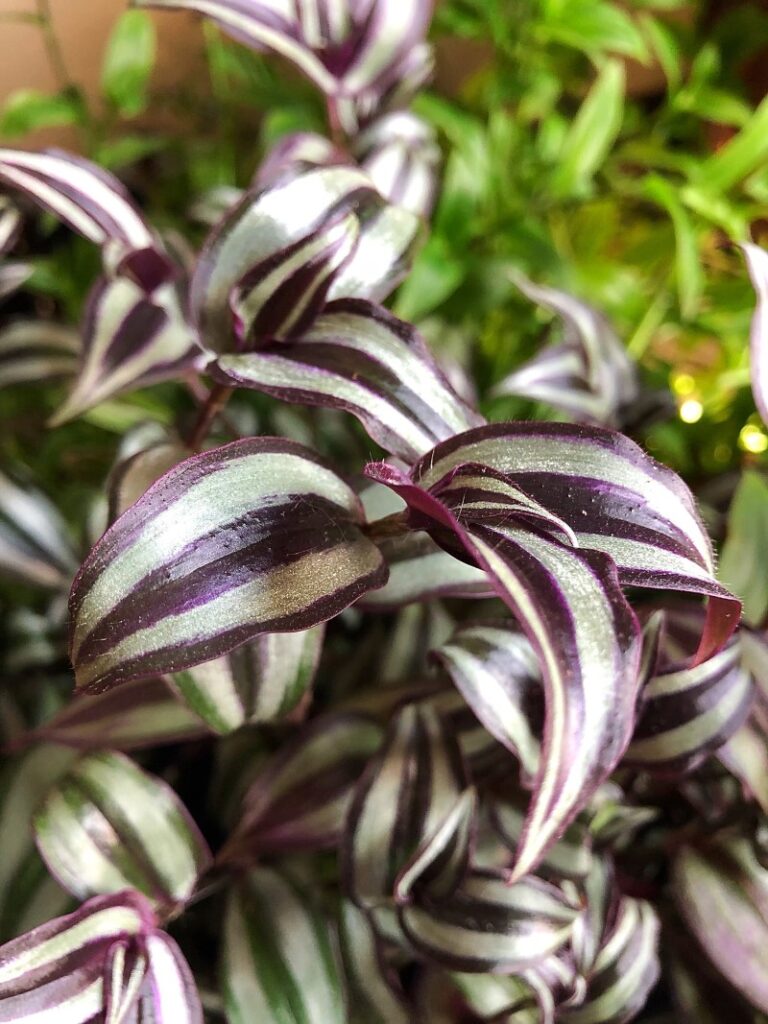
Light and Water
In the wild, the wandering jew plant thrives without assistance but under the right conditions. It likes filtered sun so indoor fluorescent light is enough. Placing them by the window and turning the plant every two weeks will keep the leaves colorful and the growth even on all sides (3).
The plant spreads easily in damp areas that’s why it naturally grows along riverbanks and roadsides. When potted, the soil should be kept moist but well-drained. Saturated soil often causes root rot.
Fertilize your Tradescantia plant once a month during the growing season (spring and summer) with a balanced, water-soluble fertilizer diluted to half strength. Avoid fertilizing in fall and winter when the plant is dormant. Over-fertilizing can lead to fertilizer burn and damage the plant, so follow the instructions on the fertilizer package carefully.
Temperature and Humidity
Spiderworts like it warm but there should be enough air circulation or else the leaves will sag. During the heat of the summer, taking the plant outside under shade will provide the necessary cool to the plant.
Mist the hanging plant early in the morning and late in the afternoon. If the plant is on a table, place a glass of water beneath the leaves or put the pot on a wet pebble tray. This will humidify the immediate vicinity of the plant aiding in its photosynthesis and transpiration processes.
Pests and Diseases
The most common living enemies of the wandering jew are aphids, mealybugs, scale, white flies, and spider mites. Manual removal at the onset of infestation is effective but they should be closely monitored as serious attack may lead to the plant’s death. If left unnoticed and the infestation has become severe, get rid of the plant by burning to avoid contamination.
Since the creeping inch plant is mainly soft almost like a succulent, soggy soil and too wet conditions lead to root and stem rot (4). As long as the plant is receiving just enough moisture, this disease will be avoided.
Propagating wandering jew plants is very easy. They can grow from seeds but will take years to establish so the more convenient stem cutting is best. The trailing or creeping stems form nodules where the roots will eventually grow as it comes in contact with the potting soil (2). When the hanging plant has longer trails than intended, it can be trimmed and the resulting stem cuttings can be rooted to form new plants.
There will be times that the potted wandering jew will become leggy, especially if it’s been receiving more shade. To promote a bushier growth pinch back by literally pinching the tip of the plant where the new growth occurs (4). This practice allows the formation of lateral stems.
In two or three years, these hardy plants may become pot bound, with the roots taking up most of the space in the pot. Repot in a larger container with a good mixture of soil, coarse sand, and compost to replenish the nutrients and provide room for the roots to breathe. Additionally, fertilize once every two months by foliar application just to improve plant vigor.
Common Varieties of Wandering Jew
The oldest and most common indoor wandering jew, this species has leaves alternating, often overlapping when young, purple leaves with silvery green thick stripes and solid purple underside. The stem is also a mixture of purple and green.
T. blossfeldiana
The leaves of this species are quite thicker, glossy, and covered in miniscule hairs called trichomes. The three-petalled flower is an ombre of white and pinkish purple with yellow anthers.
T. fluminensis ‘Tricolor’
This attractive variety showcases leaves with white, lilac, and green variegation. It appears smaller than the common wandering jew but bushier in form.
T. sillamontana
This whimsical species looks frosted with its silvery trichomes covering the entire plant. The green leaves are still alternately arranged but more compact which make a potted plant look more bushy than trailing. The light color of the leaves provide a complementing backdrop to the bright purple flowers.
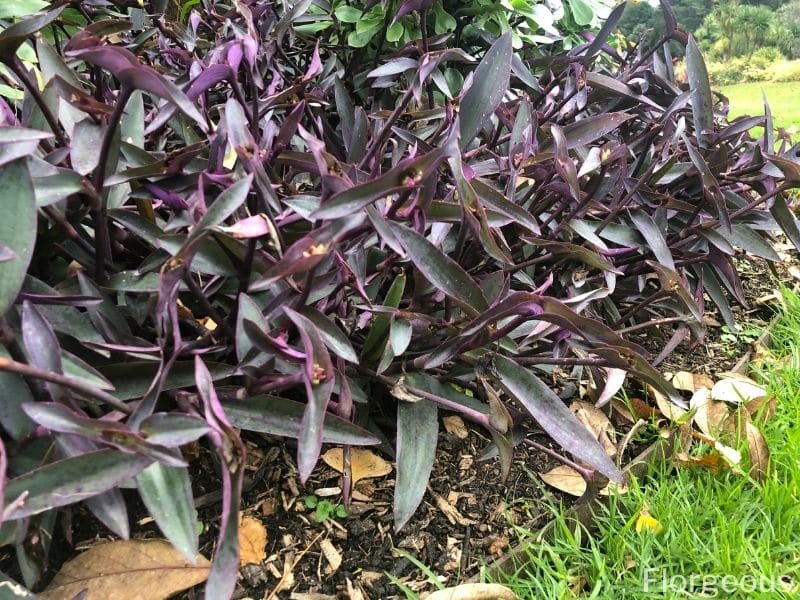
The leaves and stems of this species are in striking deep purple color hence the common name ‘ purple heart ’. Under shaded, they turn a hint of dull green. The leaves are also longer and have wider space in between.
Does Wandering Jew plant need full sun?
Wandering Jew plants (Tradescantia zebrina) prefer bright indirect light but can tolerate some direct sun, especially in the morning or late afternoon. However, prolonged exposure to intense sunlight may cause their dark green leaves to scorch.
How do you care for a wandering Jew plant indoors?
To care for a Wandering Jew plant indoors, place it in a location with bright, indirect sunlight, such as near a window. Water it when the top inch of soil feels dry, typically every 1-2 weeks, and provide well-draining soil. Additionally, mist the plant occasionally to increase humidity and remove dust from the leaves.
How do I make my Wandering Jew fuller?
To make your Wandering Jew plant fuller, prune it regularly to encourage branching and bushier growth. Pinch off the tips of the stems or trim back leggy growth to promote new growth and create a more compact appearance. You can also propagate wandering jew cuttings to create new plants and fill out the pot.
How long do Wandering Jew plants live?
Wandering Jew plants are generally long-lived when provided with proper care. With the right growing conditions indoors, they can thrive for several years, often becoming fuller and more lush over time with regular pruning and maintenance.
Reference List
(1) Dash, G., et. al. Tradescantia zebrina: A Promising Medicinal Plant. 2017. IAJPS, 4 (10). P. 3498-3502 .
(2) Arakelyan, H. Tradescantia zebrina- Mother Nature Healing. 2019. Researchgate.
(3) Vermeulen, N. Encyclopedia of House Plants. Taylor and Francis. 1999. P. 320.
(4) North Carolina State Extension. Tradescantia zebrina. NC State University. 2018. https://plants.ces.ncsu.edu/plants/tradescantia-zebrina/ . Accessed on 12 August 2020.
(5) The State of Queensland. IPA-Zebrina. Department of Agriculture and Fisheries. 2020. https://www.daf.qld.gov.au/__data/assets/pdf_file/0020/51284/IPA-Zebrina-PP102.pdf . Accesed on 12 August 2020.
Photo by Wirestock/depositphotos
Have you seen these?

Overwatered Lantana: Identifying, Fixing, and Preventing Water Damage

Overwatered Petunias: Signs, Damages, and Recovery Steps

Overwatered Pumpkin Plant: A Comprehensive Guide to Rescue and Prevention

Overwatered Dogwood Tree: Causes, Symptoms, and Revival Techniques

Overwatered Lavender: A Comprehensive Guide to Prevention and Recovery

Overwatered Geraniums: Comprehensive Guide to Causes, Signs, and Recovery Strategies
About the author.
7 Reasons for Leggy Wandering Jew Plants (How to Fix Them!)
I know that some people love the trailing habit of tradescantias. However, not everyone is a fan of excessively leggy inch plant stems. To avoid this from happening to your very own precious plants, familiarize yourself with the most common causes of spindly stems!
A wandering Jew plant can become leggy because of 1) lack of light, 2) small pot, 3) underwatering, 4) low humidity, 5) frost temperatures, 6) high heat, and 7) excess fertilizer. For some, however, this makes the inch plant ideal to grow as a hanging plant with its trailing stems.
With great care, your wandering Jew plant won’t grow super leggy and unsightly. If you want it to trail more though, you need to be careful with how you achieve that. Otherwise, your plant could die!
1. Lack of Light
The most common cause of legginess in wandering Jew plants is insufficient exposure to light. Tradescantias need at least 2 hours of bright indirect light.
Much like most other plants, the beautiful inch plant needs plenty of bright light—direct or indirect—to thrive and become bushier as it grows.
So when it doesn’t receive enough light , its stem will start stretching out more and more, growing much longer than 1–1.5 inches (2.5–3.8 cm) between each node.
It stretches out in search of light to be able to make food for itself through photosynthesis!
Wandering Jew plants need at least 2 hours of sun or grow light exposure each day. Otherwise, they will become weak and really leggy.
As someone who has grown tradescantias both indoors and outdoors over the years, I can say that those grown in the house are more likely to turn scraggly. This is especially true when they’re placed in a dark corner of a room.
Besides etiolation, inch plants receiving insufficient light are also more likely to develop smaller leaves and lose their vivid coloration.
Move the leggy wandering Jew plant to a sunnier location, one that gets more or less 2–6 hours of sunlight .
When that’s not an option for you, provide supplemental lighting for your thin and spindly plants. A full-spectrum grow light like this one from Amazon will be great.
2. Small Pot
Due to their relatively fast growth rate, wandering Jew plants can easily outgrow small pots and turn leggy when there is no more enough room for growth.
Tradescantia zebrina , in particular, is a fast grower even when kept as a houseplant .
So when they are kept in pots that are too small, you can expect them to outgrow those containers in less than one year. The same can be said when inch plants are overcrowded.
You see, most tradescantias grow by creeping on soil and rooting along their nodes for anchorage and better, fuller growth.
Hence, when they no longer have available ground to cover, they will start trailing and stretching out of their container in search of more soil to latch on to.
In other words, it’s much easier for potted indoor spiderwort to become leggy as it ages.
Other people do this intentionally, growing their spiderwort in small hanging planters to add brightness to a room using their bright-colored and variegated leaves. But the issue with this is that they’re more likely to become pot-bound faster.
Choose shallow but wide pots when growing wandering Jew plants to allow them to creep and establish their roots in plenty of soil without trailing too much.
A pot that’s at least 8 inches wide will generally give the inch plant enough space for growth for a year or so and prevent legginess.
3. Underwatering
When underwatered, a wandering Jew plant can become leggy, drop leaves, and develop discoloration.
The sweet spot for inch plants is moderately moist soil that drains well over time so that it doesn’t become waterlogged.
Simply put, they don’t like getting too dry. With a lack of water, they will stretch out their stems and become leggy. Upright spindly growth is usually a sign that your spiderwort is so thirsty!
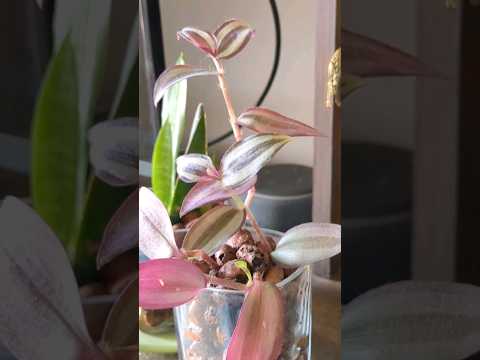
Despite having succulent stems , the soil they are grown in should never become completely bone dry before they are watered once again.
Also, keep in mind that wandering Jew plants receiving more direct sunlight exposure will require more frequent watering.
This is important so that they don’t get leggy and wither away due to lack of water.
Make sure to water your wandering Jew plants whenever the top 1–2 inches (2.5–5 cm) of their soil are dry to the touch.
It may also be helpful to give them a good soak at least once a week in especially hot summer months. Do this in the morning so that water left on the leaves can evaporate before sundown. Otherwise, you may get crown rot.
4. Low Humidity
Humidity levels that constantly dip below 40% can be detrimental for wandering Jew plants and can cause spindly growth.
Similar to the reason in the previous section, consistently low humidity levels tend to turn wandering Jew plants incredibly leggy.
Their stems will stretch out in search of more moisture in the air.
Oftentimes, this happens during the colder winter months, especially when there’s central air conditioning or you have an air conditioning unit near your spiderwort plants.
Besides scraggly stems, consistently low humidity can also cause the plant to turn brown, and even die.
If you have other plants at home, position them near your wandering Jew plants. This will help boost the humidity in the space.
Placing a potted tradescantia on top of a tray with water and pebbles can also effectively boost humidity. To further ensure ideal humidity levels, get a good humidifier!
5. Frost Temperatures
The wandering Jew plant cannot tolerate frost for long periods, its stems can become very spindly and may die in such cold temperatures.
Sure, inch plants can thrive in both warm and cool weather. But this doesn’t mean that they can handle the cold well.
Overall, most inch plants can’t withstand frost temperatures at −30°F (−34°C) and lower for an extended time.
In fact, a wandering Jew plant can not only grow leggy but also die when it is exposed to particular chilly weather.
A friend of mine almost lost her spiderwort to the cold after forgetting to bring it in before the frost set in in their state.
Fortunately, she was still able to save some of the stems for propagation. Now, her potted plant is once again lively!
When growing in cool areas that can become very cold in fall and winter, it’s best to bring in wandering Jews that were grown outdoors to allow them to overwinter safely.
Be sure to take note of the USDA plant hardiness zone for the variety of Wandering Jew you have as well. Tradescantia ohiensis , for instance, can fare better in cooler zones from 4 to 9.
6. High Heat
Overly hot growing conditions can make a wandering Jew plant unattractively leggy, especially when placed close to a heat source.
Even if it can grow well with pretty warm temperatures between 77–86°F (25−30°C), it doesn’t like unbearably hot temperatures.
Combined with very little light, heat can cause substantially scraggly growth in inch plants. I’ve seen this happen when they are exposed to temperatures over 95°F (35°C).
To be more specific, a potted tradescantia that’s kept next to a fireplace, heating vents, radiator, space heaters, or the stove and oven have a high chance of stretching out.
If you look closely, you’re likely going to notice that the plant stretches away from the heat source in such conditions. It may also develop browning as it basically gets roasted in heat!
Extremely high summer temperatures can also cause long leggy wandering Jew stems and inhibit blooming.
Keep your wandering Jew in a relatively cool or warm area, away from sources of direct heat.
Opt for more heat-tolerant varieties, such as Tradescantia pallida , if you live in a warmer region as well.
7. Excess Fertilizer
Applying too much fertilizer, especially nitrogen-rich ones, can result in long spindly stems for wandering Jew plants. This symptom is also common in other houseplants.
This applies to both plants planted directly in the ground and the ones grown in a container. However, this is more likely to happen when potted inch plants are given too much fertilizer .
Many feed their tradescantia with lots of nutrients in hopes of producing a much fuller and more bushier potted plant.
But the thing is, excessive fertilization causes plants to grow too rapidly than ideal. This result in long, weak, and leggy stems with smaller-than-normal leaves.
Using nitrogen-rich fertilizer, in particular, leads to legginess if too much is applied too frequently.
Don’t fertilize wandering Jew plants when it goes into dormancy during fall and winter. In spring and summer, they can be fertilized as often as once every 2–3 months.
Remember that potted plants grown indoors require little to no fertilizer as normally also receive less light.
What can you do with leggy wandering Jews?
Leggy wandering Jew stems can simply be cut or trimmed from the mother plant for propagation . These can be placed right into the same pot or in another container containing soil or water. Regular pinching can also promote a denser growth of the stems and foliage of the plant.
How do you stop leggy wandering Jew plants?
Stop leggy wandering Jew plants by providing at least 2 hours of light, providing a big enough pot, and providing proper growing conditions for it. Keep in mind that lights such as fluorescent grow lights lose brightness as they age, so they must be replaced after some years. Long and spindly stems can no longer revert to their compact state.
Summary of Reasons for Leggy Wandering Jew
Wandering Jew plants, especially potted ones, will become leggy as a result of too little light, being grown in very small pots, not being watered enough, humidity levels constantly below, frost temperatures of −30°F and lower, high temperatures over 95°F, and excess application of fertilizer.
As such, it’s best to balance proper care of wandering Jew plants to prevent them from becoming overly leggy and weak due to such reasons. Though they look beautiful as hanging plants, it is best to still keep them healthy and full so that they don’t die from neglect.
- “Tradescantia zebrina” by Susan Mahr in the Wisconsin Master Gardener
- “Tradescantia vs Calthea” by Alexia Larlee in University of California, Agriculture and Natural Resources
- “Growing Plants Indoors” by n/a in the University of Florida Cooperative Extension Service
- “Chapter 12: Indoor Plants” by the Virginia Cooperative Extension in Pressbooks
Similar Posts
Why does your christmas tree smell bad the 3 likely causes.
Christmas trees are known to have rich, piney scents that most people cannot celebrate the holidays without. So what exactly could cause the tree to smell bad? With the help of science, this is what I’ll be unwrapping with you today! Bad smells in Christmas trees can be due to the tree variety, mold, and…
Why Does My Christmas Tree Have Drooping Branches? [4 Reasons and Solutions]
Only 1 out of 4 trees is handpicked and chopped fresh for Christmas each year [1]. This means that 75% of real Christmas trees in the US are bought from retailers who sell pre-cut trees, with the trees losing their freshness after all the time spent in shipping and distribution. As a result, you may…
9 Reasons Why Wandering Jew Drop Leaves (With Solutions!)
One of the features I love the most of tradescantias is their striking foliage, especially varieties that are variegated. So as you can imagine, it’s never a fun experience to see a wandering Jew plant lose its leaves! A wandering Jew plant will generally drop and lose leaves because of 1) overwatering, 2) underwatering, 3)…
Growing and Caring for Begonia Maculata (Your Final Guide!)
Begonia maculata, also known as polka dot begonia, spotted begonia, or trout begonia, is an attractive plant that can elevate any garden. It is well-known for its angel-wing-shaped leaves, white spots, and easy-care nature. But how easy is ‘easy’? Begonia maculata grows in well-drained soil, indirect bright light, 65–85°F temperature range, and at least 45%…
Can Wandering Jew Dry Out: Reasons and Photos (Tested!)
For most of my life, I only ever saw wandering Jew plants being grown outside. During extremely hot summers, I knew that they can dry out easily. But I wasn’t sure how fast they would get scorched and wilt. So today, I’ll be sharing with you the results of my little experiment! Wandering Jew plants…
Full Guide on Taking Care of Calathea Louisae (7 Factors)
Calathea louisae, also known as Goeppertia louisae, or the prayer plant is a beautiful variegated-leaved indoor plant. It has been a gardener’s favorite most especially because of its aesthetic foliage. I know you are wondering how to take care of this seemingly hand-painted ornamental! So let us hop in! Calathea louisae plants thrive with 1)…
- Plant Care Guides
Press enter to search!
Most Popular
Why is my Wandering Jew plant turning brown?
January 16, 2021
Last Updated: May 17, 2022
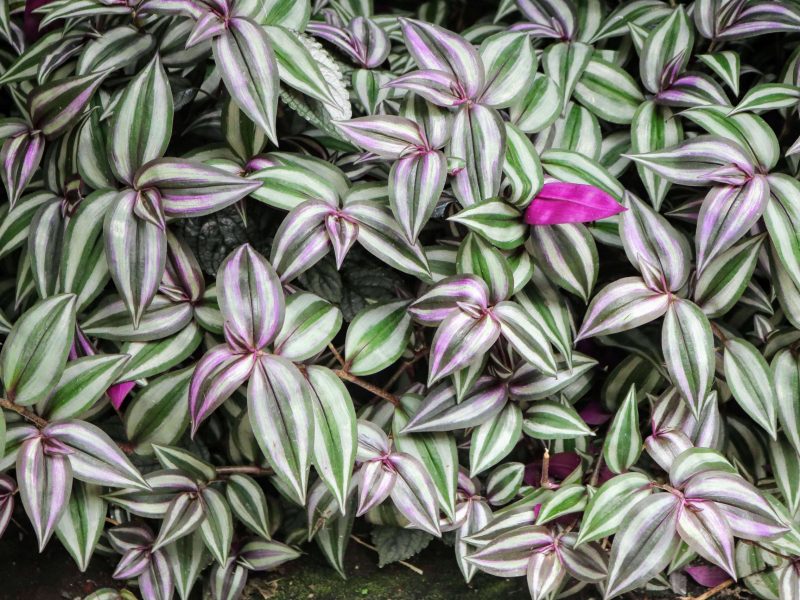
There are a few reasons why your Wandering Jew Plant is turning brown. We have researched and outlined the most common reasons so you can very quickly find out what’s wrong and fix it right away.
Low Humidity can cause Brown Leaves
Wandering Jew Plants like medium levels of humidity and will struggle to thrive in homes that have quite dry air. If there is a consistent lack of humidity , over time the leaves will start to turn brown. This usually starts from the tips and edges before moving throughout the whole leaf.
You should be extra cautious of dry air in winter as central heating and less ventilation will decrease the humidity levels and Wandering Jew Plants will find it difficult.
If it is only the leaf tips that are brown then it means you have caught the problem pretty early on so it’s a lot simpler and quicker to fix. A good way to get ahead of humidity problems is to get yourself a humidity monitor , this will let you see what’s going on in your room and react before you run into problems!
Here are some of the easiest methods to increase humidity in your home and avoid any further dry brown leaves on your Wandering Jew Plant.
Misting the leaves
One of the simplest ways to increase the humidity for your Wandering Jew Plants is to mist the leaves with a spray bottle . We recommend doing this a few times a week if the air is really dry. It’s also important that you only mist in the morning as there is enough time for the water to evaporate before it gets dark. If the temperature drops and the leaves are still wet then they can rot pretty quickly. We love these spray bottles from Amazon because they’re super affordable and look great!
Pebble tray
Place your Wandering Jew Plants over a tray of small pebbles. Fill up the tray so the water reaches halfway up the pebbles. You want to make sure that the water level never reaches the pot as the roots will rot if they are sitting in a puddle of water all day.
Over time the water in the tray will slowly evaporate, lifting up the humidity level. Replace the water every few days to stop it from becoming stagnant. Otherwise, it’ll start to smell!
Give your plant a shower
To quickly raise the humidity and wash down your Wandering Jew Plant of any dust on the leaves, you can give them a shower. Make sure to use lukewarm water as you don’t want to shock or burn the plant. Try to keep the water pressure fairly low as you don’t want to damage the plant.
Move your plant
Kitchens and bathrooms have naturally higher humidity levels than other rooms in your home. This is because of the steam from showering and cooking. If you have good lighting in these rooms, we recommend moving your Wandering Jew Plant in there and you won’t need to remember to mist or shower the plant.
Buy a humidifier
If you want a long term solution to raising the humidity in your home, then buy a humidifier . They aren’t super expensive and are great at maintaining a good humidity level in your home. They also have other benefits such as better sleep and clearer skin, so think of it as an investment for yourself, not just your houseplants. This is our favourite humidifier from Amazon, it does a great job of keeping some humidity in through the colder/dryer months.
Want to know more about how to raise the humidity for your Wandering Jew Plant and other houseplants? We have written a whole guide on this.
Underwatering can cause yellow Wandering Jew Plant leaves
If your Wandering Jew Plant has developed dry brown leaves then it may be a consequence of underwatering. Check the moisture levels in the soil to find out. If it is bone dry and very powdery then your plant probably needs more water.
Your first instinct to fix an underwatered Wandering Jew Plant is probably to drown it in water. However, this can actually cause further damage as your plant may get shocked by the sudden change in environment. The best thing to do in this case is to slowly reintroduce watering by giving your plant a little bit twice a day for a few days. You will also want to change your routine a little to make sure you’re watering a little more to avoid this problem recurring.
Investing in a moisture meter would be a great idea, these handy little things take all of the guess work away from watering. If you really just want a set it and forget it solution, getting a self watering pot could be the way.
Too much sunlight could also cause brown leaves
If your Wandering Jew Plant is receiving too much bright direct sunlight each day you may start to notice yellow/brown patches appearing on the leaves. This is because the plant is being scorched by the intense sunlight.
Although this problem is irreversible once it has happened, it’s pretty simple to fix for the future. Move your Wandering Jew Plant to a place in your home with less light and it should begin to recover. Monitor the sunlight levels in your home across the year because you might be able to move your plant closer to the window over winter when the sun isn’t as strong. If you prefer you can carefully trim away the burnt patches on your Wandering Jew Plant’s leaves so your plant looks healthier and can focus on producing new healthy growth.
You can use a light monitor to figure out if your plants are getting the right amount of sunlight. We love this one which is available on Amazon here.
Natural ageing…
Wandering Jew Plants are a little different than a lot of other houseplants in the way they lose their leaves as they age. Most houseplants lose their oldest, lowest leaves but Wandering Jew Plants actually struggle to keep the middle leaves alive as they grow longer. These middle leaves will begin to turn brown before falling off the plant.
The best thing to do is to prune the vines back, above the brown area and propagate the healthy stems . This way you can plant the new vines back into the pot or create a new Wandering Jew Plant altogether.
If you want to learn more about Wandering Jew Plant care or other common problems, then check out our plant care guide . We also have a downloadable ebook if you want to learn more about keeping happy and healthy houseplants.
Complete Houseplant Care eBook
Our comprehensive (and rather good looking) eBook that will teach you everything you need to know to successfully care for, and maintain your houseplants!
We think you'll like these!
- How to Propagate a Wandering Jew plant (Tradescantia)
- Why is my Wandering Jew Plant losing leaves? Causes and Solutions
- Yellow Wandering Jew Plant Leaves | Causes and Solutions
- How to Propagate String of Turtles
- How to Use Leca for Houseplants
Purple Velvet Plant

Top 10 Houseplants with Purple Leaves
Azalea Flower

The Best Houseplants with Pink Flowers
Calathea Triostar

10 Best Houseplants with Red Leaves
Red Bromeliad Flower

The Best Houseplants with Red Flowers
Prickly Pear Cacti

How to Propagate a Prickly Pear Cactus
Large Monstera Leaves

12 Houseplants with Big Leaves
White Flowers on a Peace Lily

11 Houseplants with White Flowers
Low Light Cat Safe Houseplants

10 Low Light Cat-Safe Houseplants
Healthy Hosta Leaves

Brown Hosta Leaves: Causes and Solutions

Top 10 Best Houseplants for Cold Rooms

Propagating a Mother of Thousands Plant The Ultimate Guide
Spider Plant in a Ceramic Pot

Ceramic Pots for Houseplants: The Ultimate Guide
Fiddle and Thorn is a participant in the Amazon Services LLC Associates Program, an affiliate advertising program designed to provide a means for sites to earn advertising fees by advertising and linking to Amazon.com
Take our houseplant survey!
Quickly respond to our 30 second houseplant survey and get 75% off our Complete Houseplant Care eBook!
No thanks...
Get our journal delivered
From us, direct to your inbox.
Helping you care for your houseplants.
Plants Index
Our Journal
© Fiddle and Thorn Ltd. Company number 13713284.

IMAGES
COMMENTS
Wandering jew leaf turning brown. 2. Under Watering. Lack of adequate soil moisture is another very common cause, and often a struggle for many types of Tradescantia plants. When the soil is allowed to dry out too frequently, or remains that way for a long period of time, it can cause the leaves to die. 3.
Overwatering. One of the most common causes of brown spots on Wandering Jew plants is overwatering. These plants prefer soil that is lightly moist but not waterlogged. When the soil is too wet, it can cause root rot, which can lead to brown spots on the leaves. To prevent overwatering, make sure you allow the soil to dry out slightly between ...
Wandering Jew plants turn brown because of 1) natural aging, 2) underwatering, 3) overwatering, 4) excessive sunlight, 5) high temperatures, 6) low humidity, 7) overfertilization, 8) pest infestation, and 9) plant diseases. Depending on the reason a wandering Jew plant turned brown, you may be able to stop it from getting worse and prevent it ...
In today's video, we take a look at a problem I've had for a while in the warmer, more humid section of my greenhouse. You may have seen in earlier videos, w...
3. Another reason is when your plant is mature and has a lot of old growth, then the leaves could also start losing their color. 4. Apart from that, it can be due to dust accumulation as well. 6. Lastly, there can be a watering issue: Underwatered Wandering Dudes will get droopy, and the leaves will lose their shine.
W andering Jew Plant Care. To keep your Wandering Jew plant thriving, ensure it receives bright, indirect sunlight. Keep it in average room temperatures of 60-75°F (16-24°C). Fertilize once a month during spring and summer. In winter, relocate the plant to a cooler area with temperatures of 54-59°F (12-15°C).
Excessive direct sunlight can scorch the leaves, leading to leaf loss. Adjust the lighting conditions to find the optimal balance. Temperature Extremes: Extreme temperatures, such as cold drafts or heat stress, can cause leaf loss. Wandering Jew plants prefer moderate temperatures between 65-80°F (18-27°C).
Water the Wandering Jew consistently and lightly for a few weeks until changes and growth appear. Stem Cuttings. If needed, you can revive the plant by cutting the stems. Prune and place the stems in a glass of water until new roots appear. Place the glass in the shade while waiting for the roots to develop.
The wandering jew is famous for the speed at which it produces dead leaves! Therefore, if you're picky about plant neatness, you'll need to go over your plant and remove the dead leaves every week or so. After cleanup, a wandering jew (here, Tradescantia zebrina) is quite presentable again. Of course, as the oldest leaves are mostly in the ...
3. Pot your Wandering Jew plant. Fill the pot about two-thirds of the way with light, well-draining potting soil, then place the plant in the center of the pot. Add soil to surround and fill in the sides. Gently press down on the soil around your plant and water it until the soil is completely moistened.
An inch or two with a few leaves works best. Remove the leaves at the bottom so part of the stem is exposed. Place the cutting in a glass of water to root or plant it directly in soil. You can put cuttings back in the mother plant's pot to give her a fuller appearance on top.
My Tradescantia/Wandering Jew has brown spots on its leaves. I put it next to the window which has the most light, and been watering it after the soil is complete dry. Also the green part of its leaves looks more yellow recently.
To care for a Wandering Jew plant indoors, place it in a location with bright, indirect sunlight, such as near a window. Water it when the top inch of soil feels dry, typically every 1-2 weeks, and provide well-draining soil. Additionally, mist the plant occasionally to increase humidity and remove dust from the leaves.
Step 2: Trim weak or thin areas - Next, remove any thin, weak, or leggy sections of your wandering dude plant down to a lower leaf segment. You can either pinch them back with your fingers, or cut them using clean, sharp shears or snips. Cut back wandering jew just above a leaf joint.
What is wrong with my wandering Jew 😩 leaves turning brown/dying, I started taking it in shower with me for humidity and treating w/neem oil, watering lightly every few days Help 😭 ... I keep finding spots on and leaves keep falling off of my Little Jewel. I'm a novice gardener. I try to water about once every ten days.
Also if you are in the northern hemisphere, you should be watering less as the days become shorter. So just keep an eye on it and meanwhile think if there is a better place for it in your house or if you need to adjust anything i the way you care for it. 682K subscribers in the plantclinic community. If you're wondering "what's wrong with my ...
A wandering Jew plant can become leggy because of 1) lack of light, 2) small pot, 3) underwatering, 4) low humidity, 5) frost temperatures, 6) high heat, and 7) excess fertilizer. ... I understand how irritating it is to see brown spots or edges on this lovely foliage plant! Philodendron birkin leaves turn brown due to cold injury, improper ...
Wandering Jew Plants like medium levels of humidity and will struggle to thrive in homes that have quite dry air. If there is a consistent lack of humidity, over time the leaves will start to turn brown. This usually starts from the tips and edges before moving throughout the whole leaf. You should be extra cautious of dry air in winter as ...
Why does my wandering jew have these weird brown spots? are they leaning on/very close to your window? mine is getting lots of sun in a southwest-facing window, and i found the same crunchy brown spots. i traced them to the leaves that are closest to the window, which can get super toasty in the summer sun, so i moved it back like 6 inches ...
A wandering jew plant will thrive with the proper care. Learn all about how to grow them: water, light, soil, fertilizer, pruning, and more! ... Most of the time, brown spots on tradescantia leaves are caused by improper watering (over or under watering). Wandering jews are very prone to root rot when overwatered, but love lots of humidity.
Low humidity. Wandering Jew plants prefer moderate levels of humidity and will struggle to thrive in homes with excessively dry air. If you live in a dry climate, your plant's leaves may start to turn brown, starting from the tips and the edges and spreading to the rest of the leaf if the problem is not addressed.
A bit about the plant. I got it from a nursery about a week and half ago and it seemed fine then, minus some usual brown spots. This evening I noticed these dark spots on the new bud. It's in a west facing window, so it gets medium/bright light. The soil dried out a bit, but I didn't think it totally dried out.
I think it's burn spots as well. I have a potted Dude that only gets filtered eastern morning sun and I have water propagated stems now in my windowsill that gets direct sun. The propagated stems have the burn spots, but my actual potted plant is spotless. 18 votes, 21 comments. 715K subscribers in the plantclinic community.